Tom's Hardware Verdict
The EVGA SuperNOVA 850 P6 is a good PSU, but it is more expensive than the 850 G6, which performs a little better and has lower average noise output.
Pros
- +
+ Full power at 47 degrees Celsius
- +
+ Efficient
- +
+ Good build quality
- +
+ Tight load regulation at 12V
- +
+ Long hold-up time
- +
+ Low inrush current with 115V
- +
+ Not noisy at normal operating conditions
- +
+ Fully modular
- +
+ Loads of connectors
- +
+ Compatible with the alternative sleep mode
- +
+ Compact dimensions
- +
+ 10-year warranty
Cons
- -
Competitors have stronger performance
- -
Noisier than the, less efficient, 850 G6
- -
Transient response should be better
- -
High inrush current with 230V
- -
Not efficient 5VSB rail
- -
Some EMI spikes
- -
The APFC converter needs tuning
- -
Small distance between connectors
Why you can trust Tom's Hardware
Similar to the EVGA SuperNOVA 1000 P6, the 850 P6 uses a modified Seasonic Focus Platinum platform, with the major change being the addition of an MCU for enhanced protection features. The overall performance is good, but the 850 G6 performs better overall, and it is also less noisy, so you can save some money and go for this model instead. Finally, the 850 P6 cannot claim a place in our best PSUs article given the tough competition.
EVGA's new P6 line consists of four models ranging from 650W to 1000W. All are based on a modified Seasonic Focus Plus Platinum platform, with an extra circuit providing hybrid (Hardware & Firmware) over power protection (OPP). An analog IC handles hardware OPP, and an MCU is responsible for the firmware OPP.
The first is designed to trip when power output exceeds 135% for a few nanoseconds, while the latter trips once power exceeds 125% for more extended periods, in the millisecond range. The new generation GPUs have some nasty power spikes, and through this hybrid OPP, the P6 and G6 EVGA PSUs can cope without shutting down, while at the same time they offer good protection to sustained high loads.

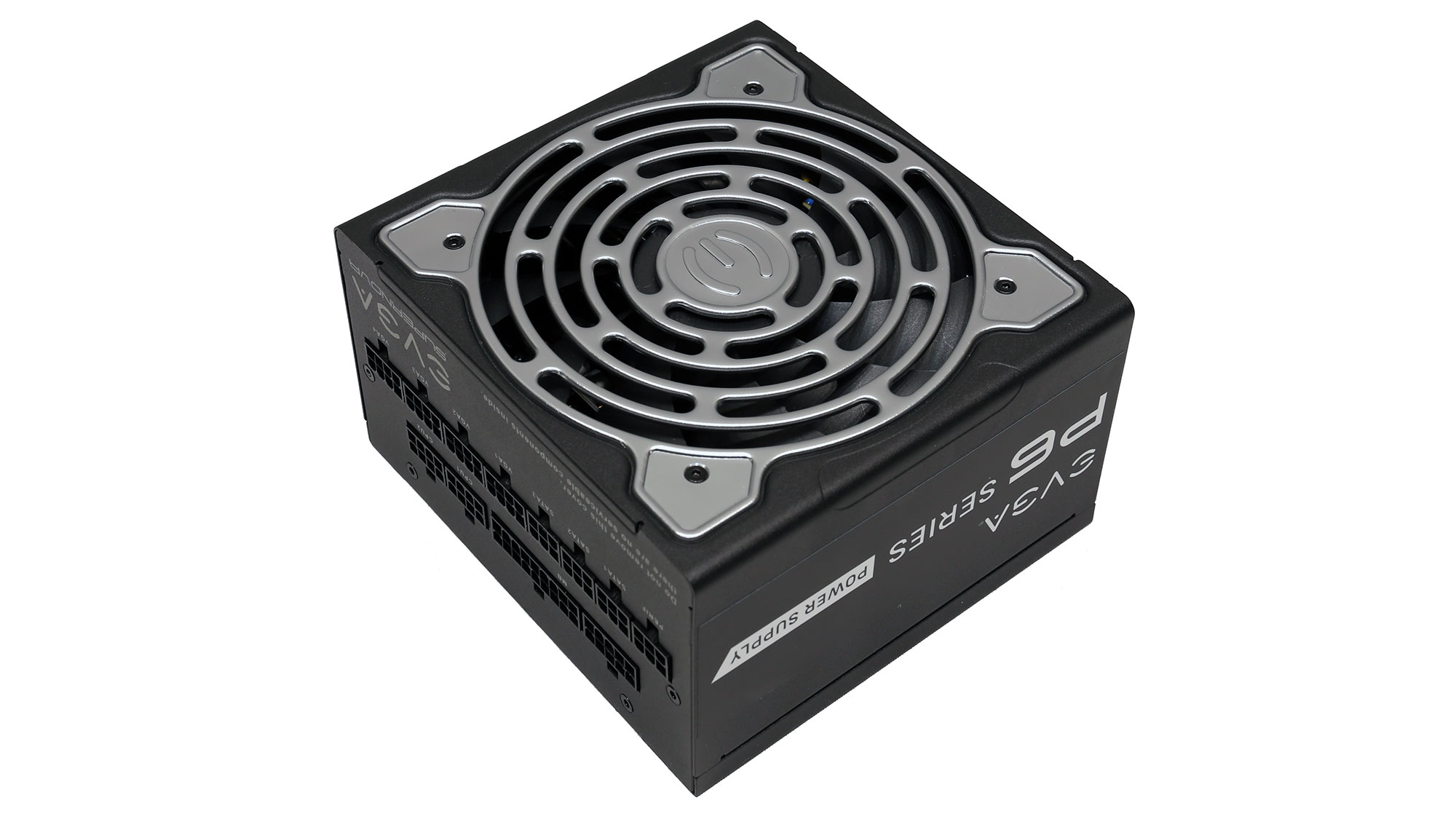


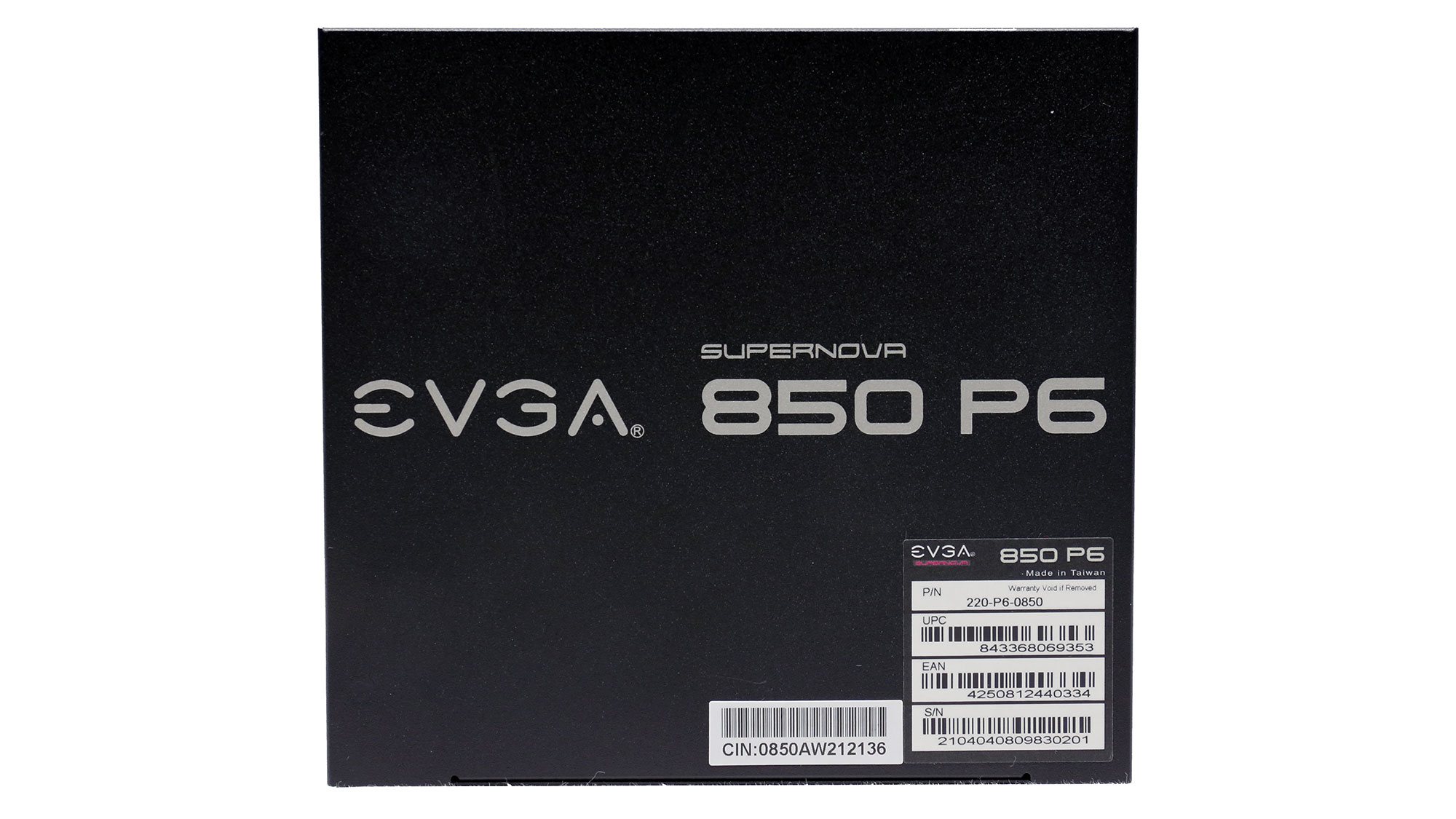
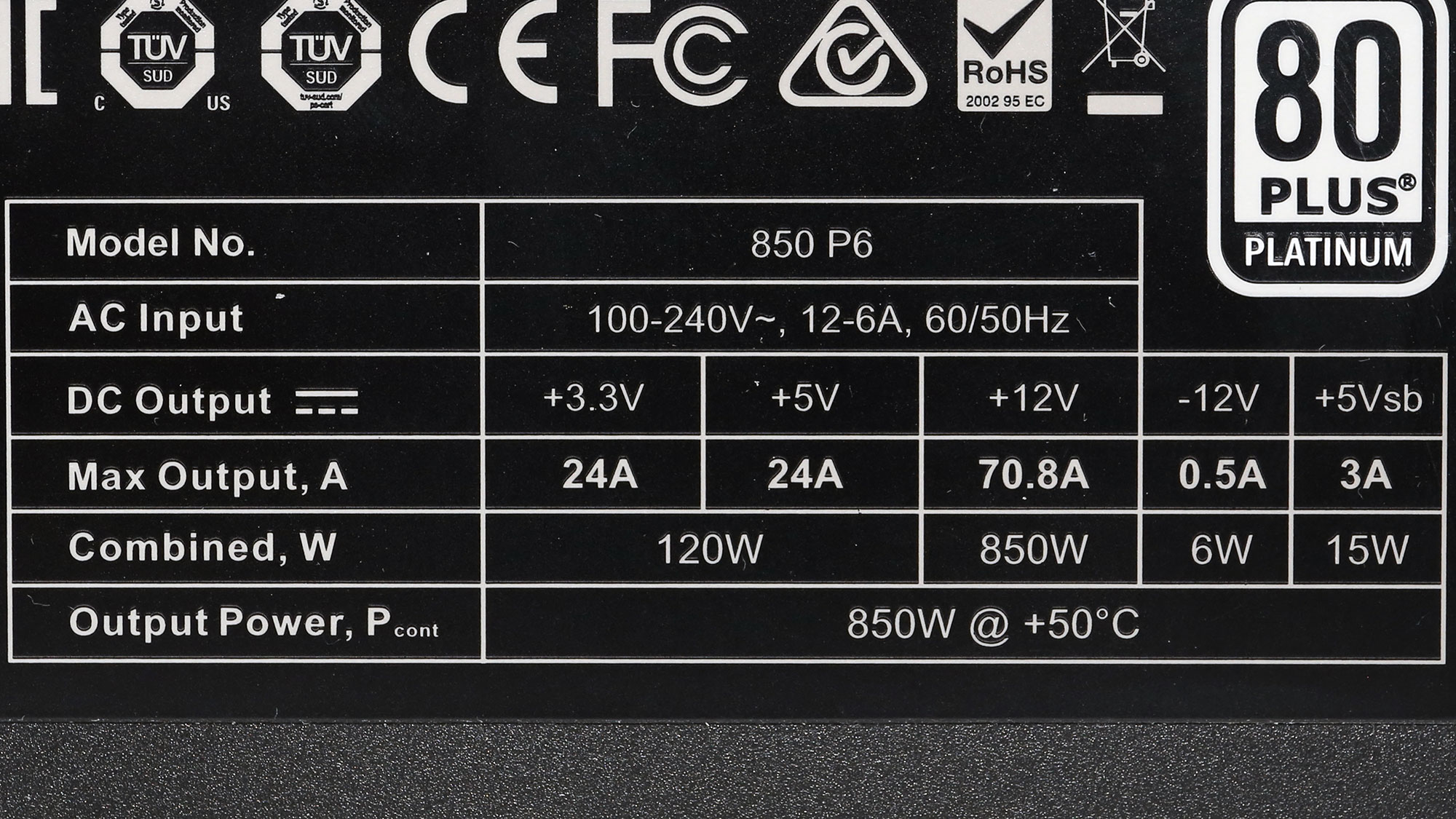
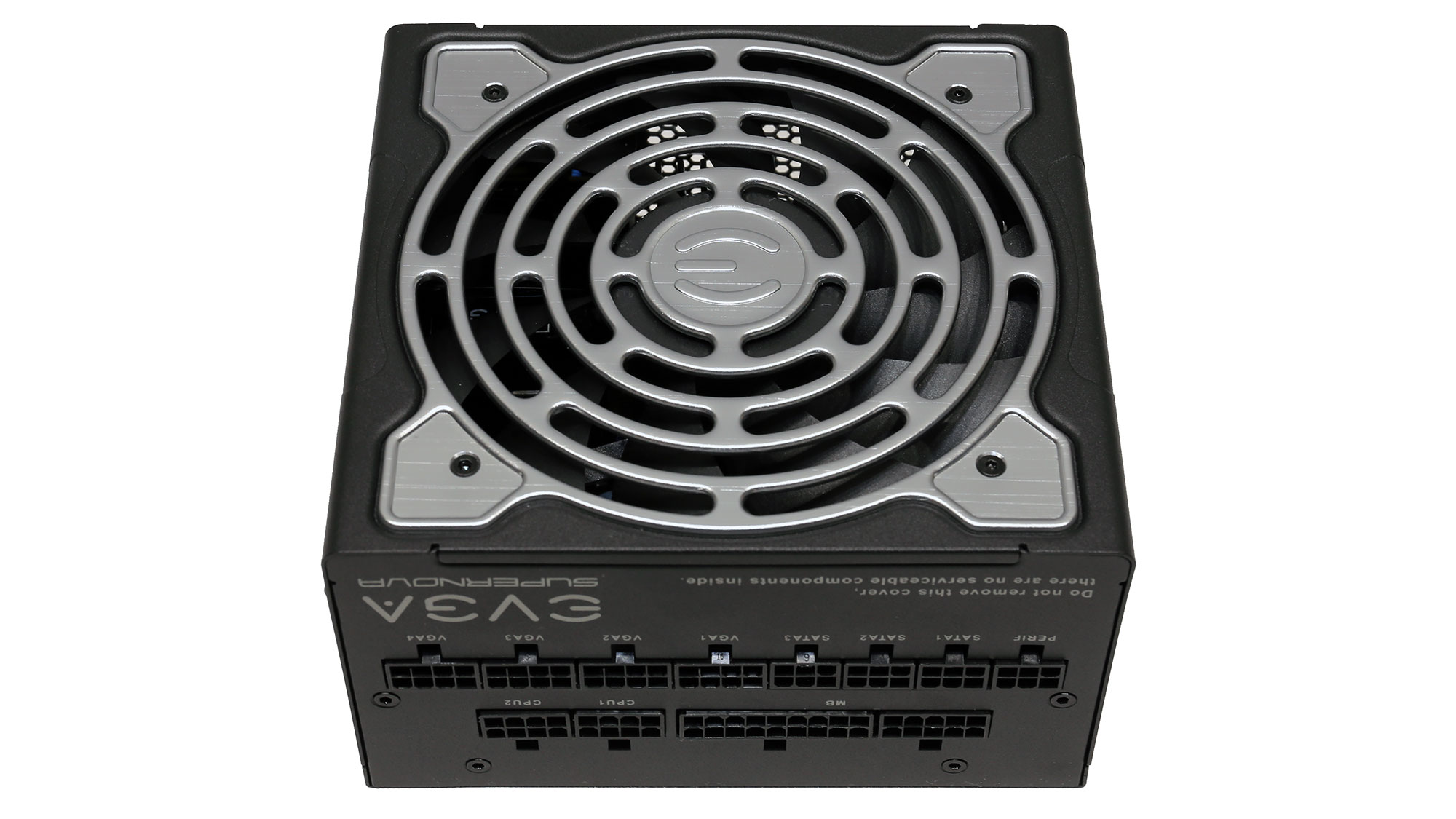
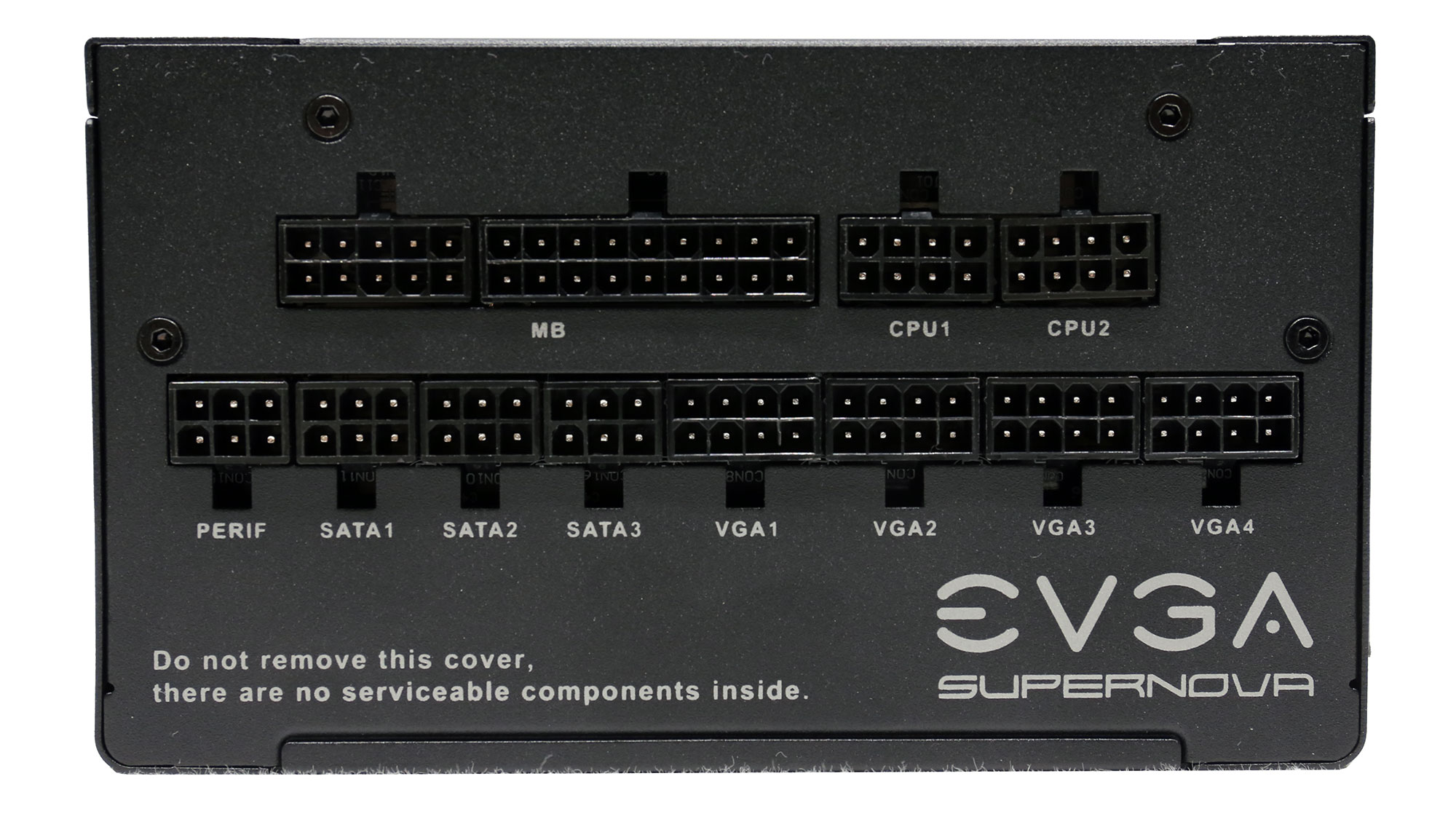
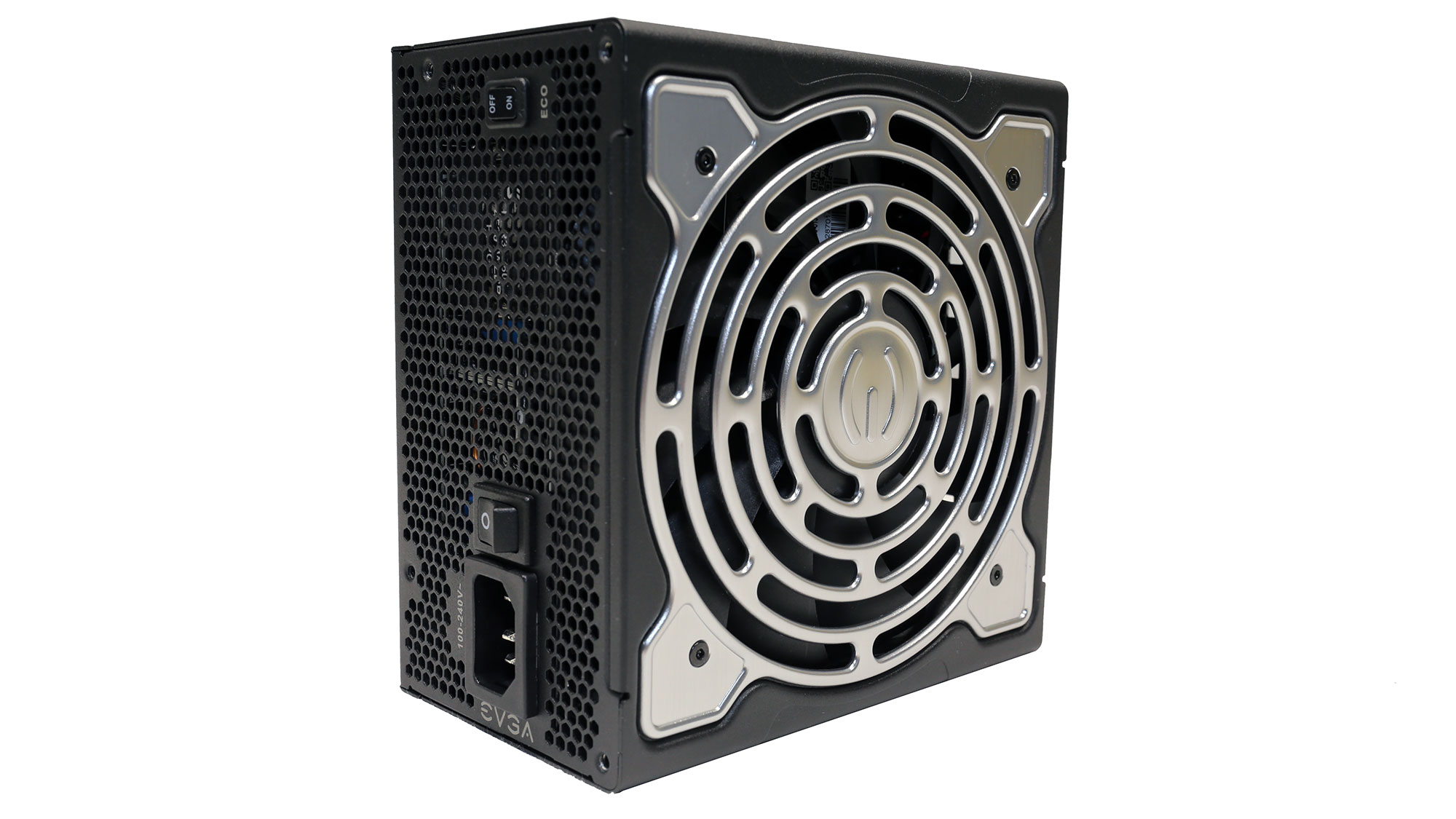
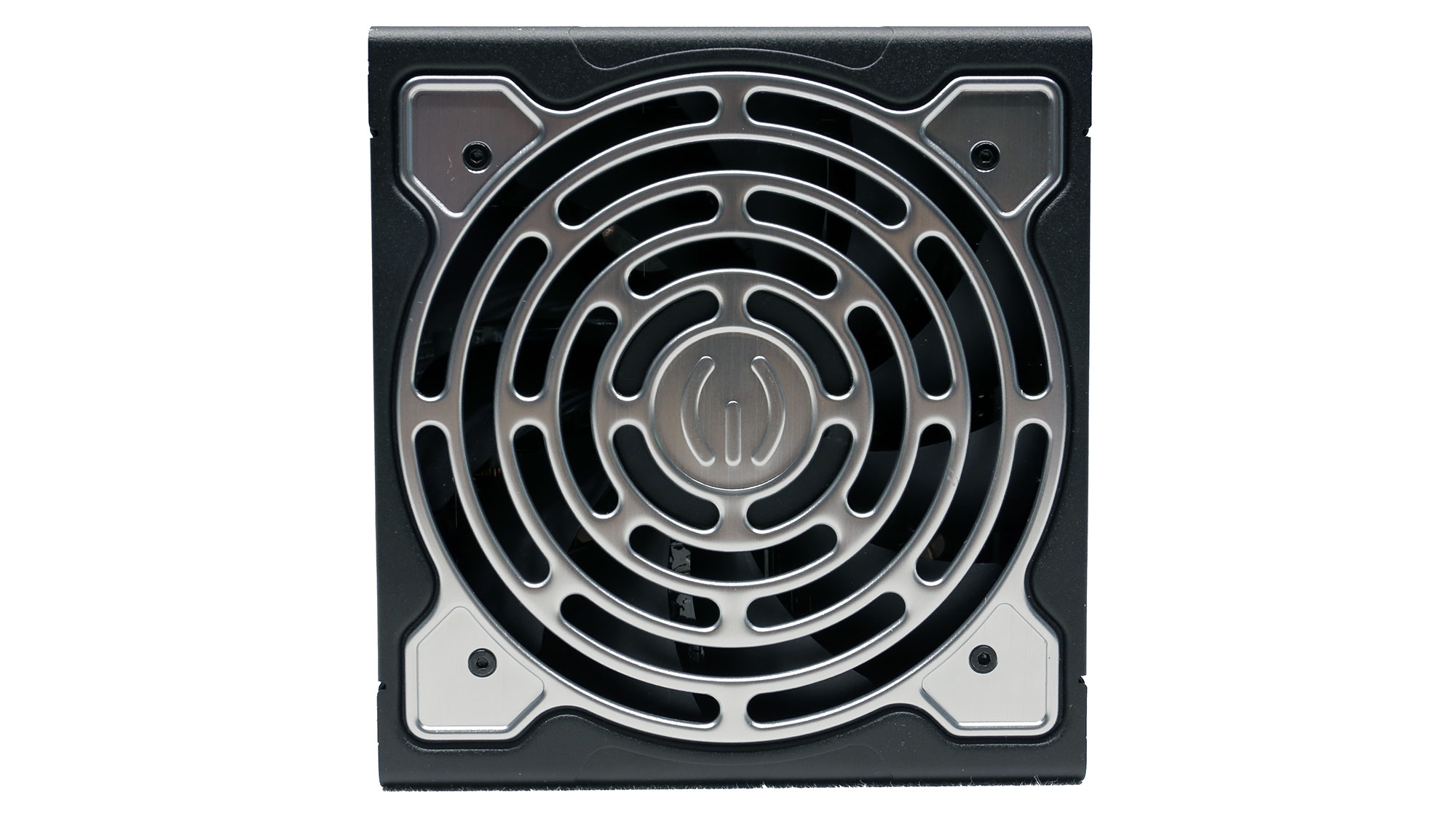

Like its big brother, the 850 P6 has super-compact dimensions, measuring only 140mm in depth. The warranty is long at 10-years, and the FDB cooling fan won't have a problem outliving it under normal operating conditions. Lastly, the PSU is rated Platinum in both 80 PLUS and Cybenetics, and it is also rated as Cybenetics S++ (30-35 dB[A]) in noise output.

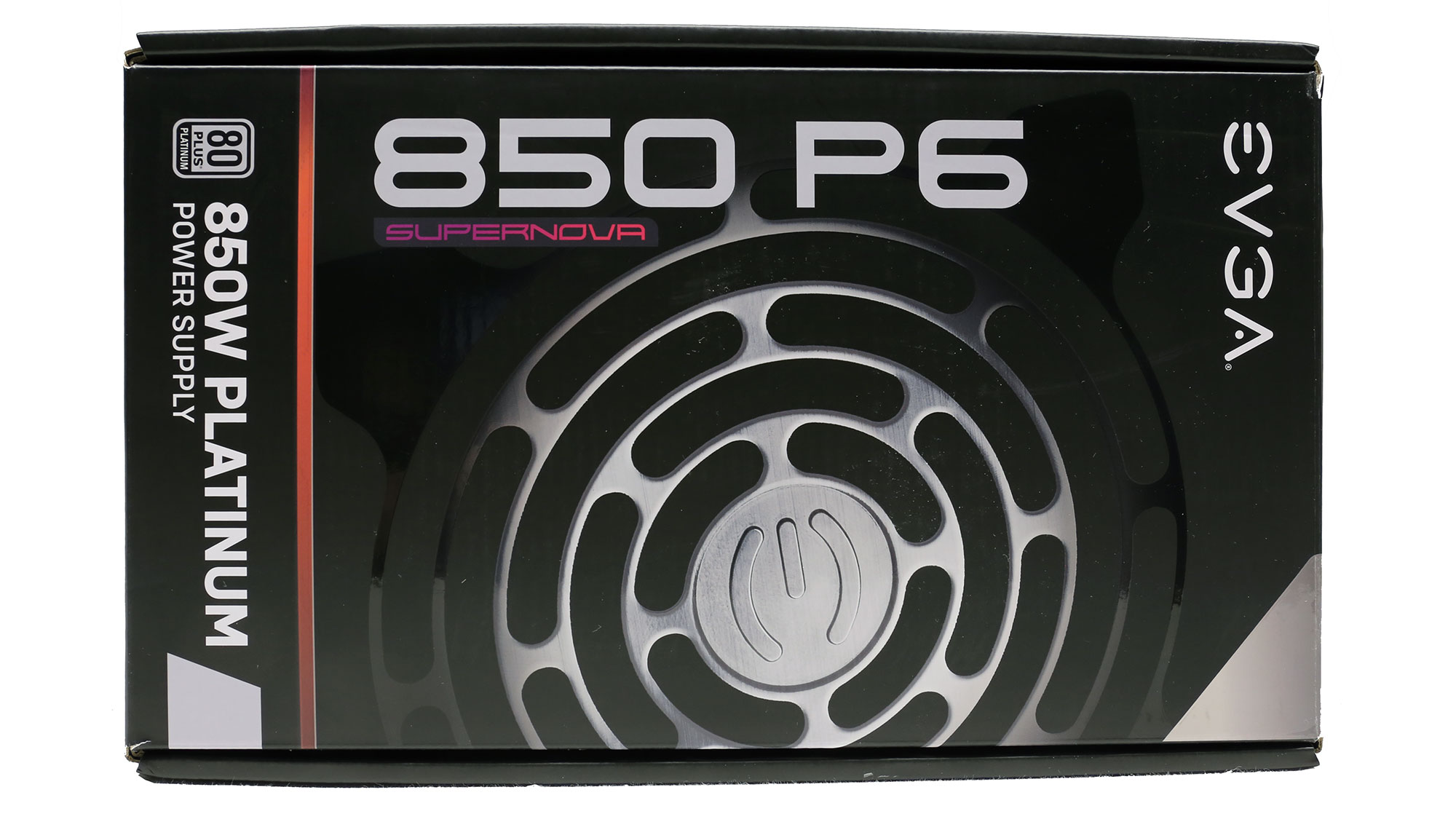

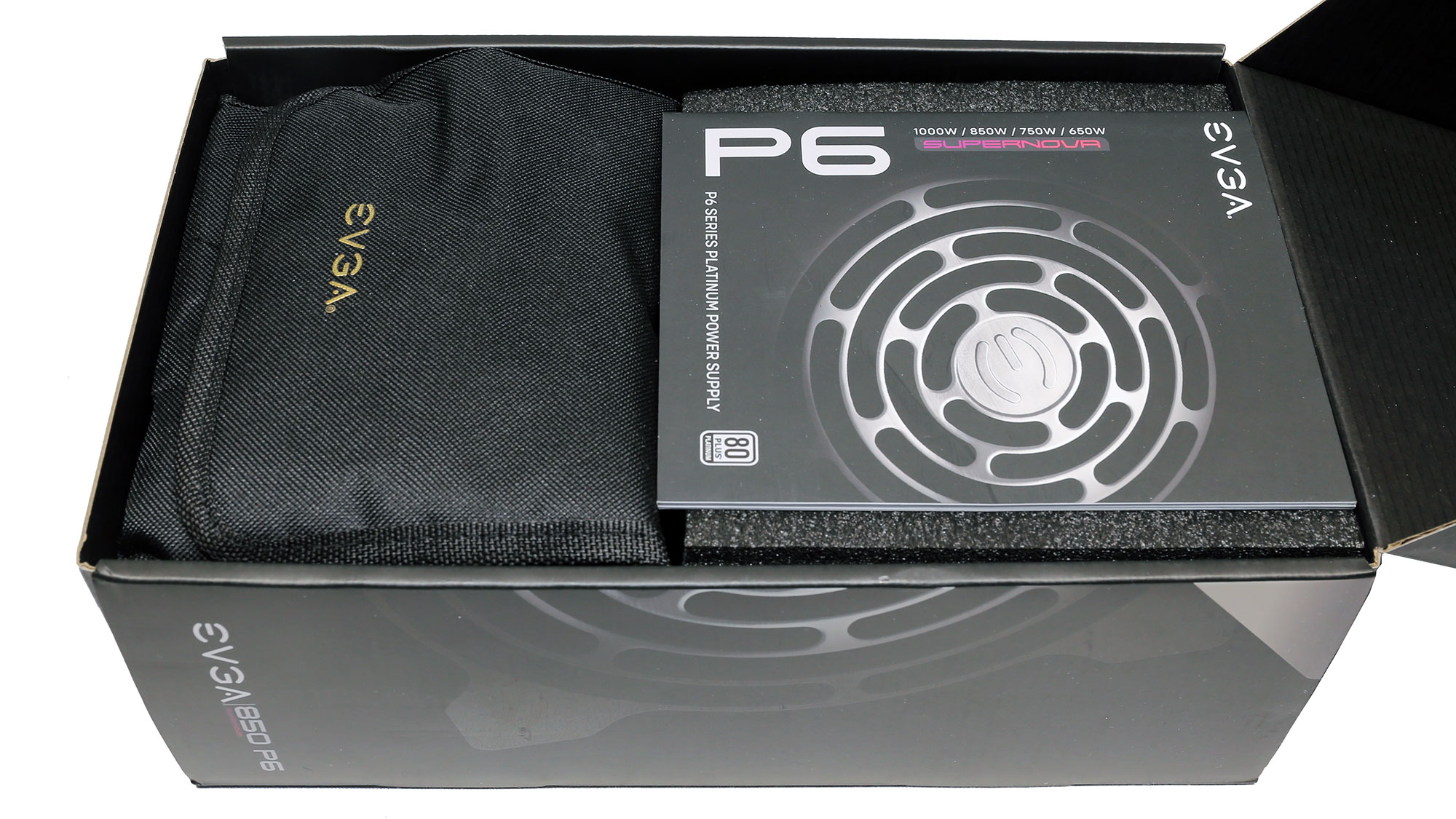
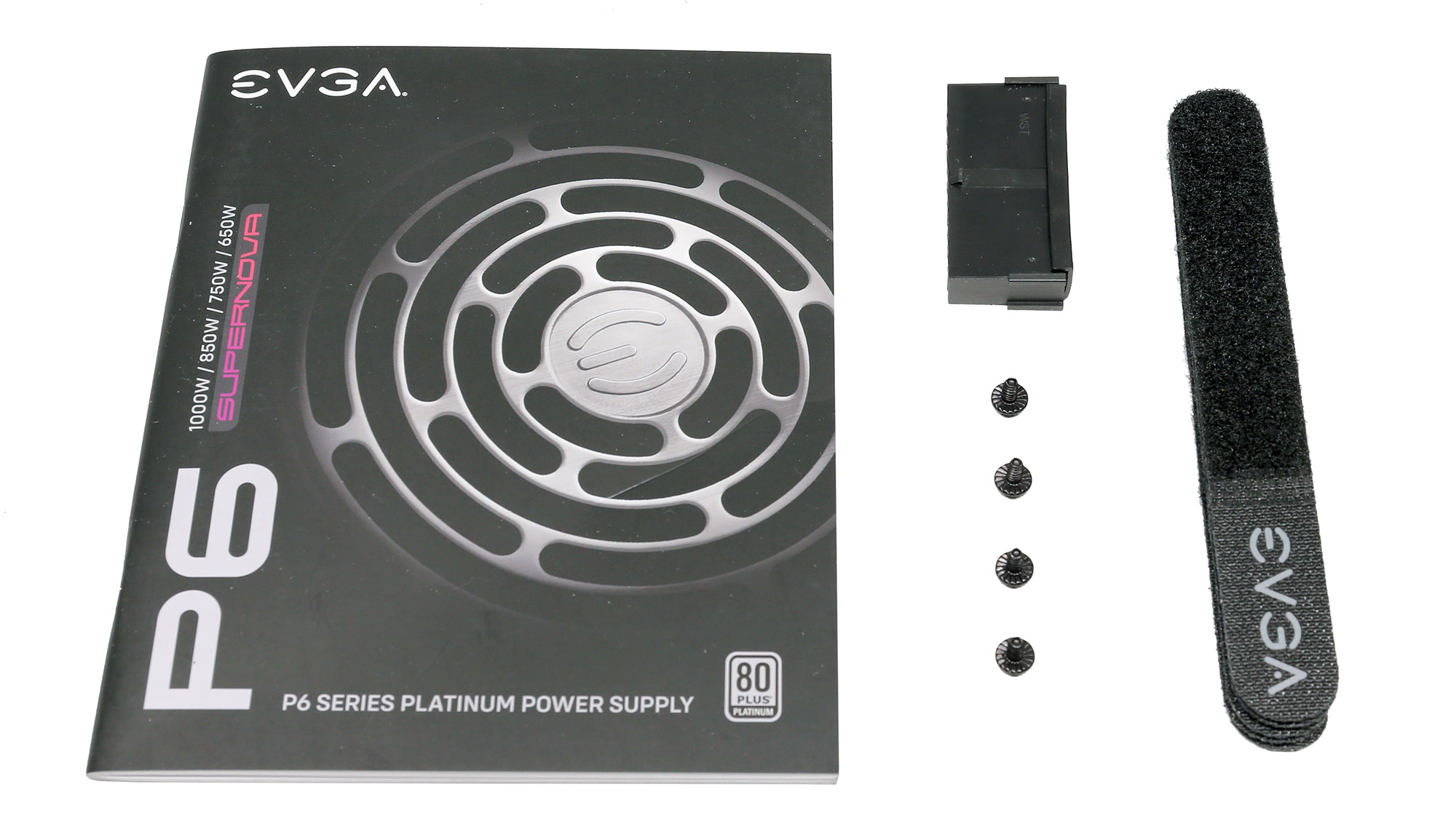
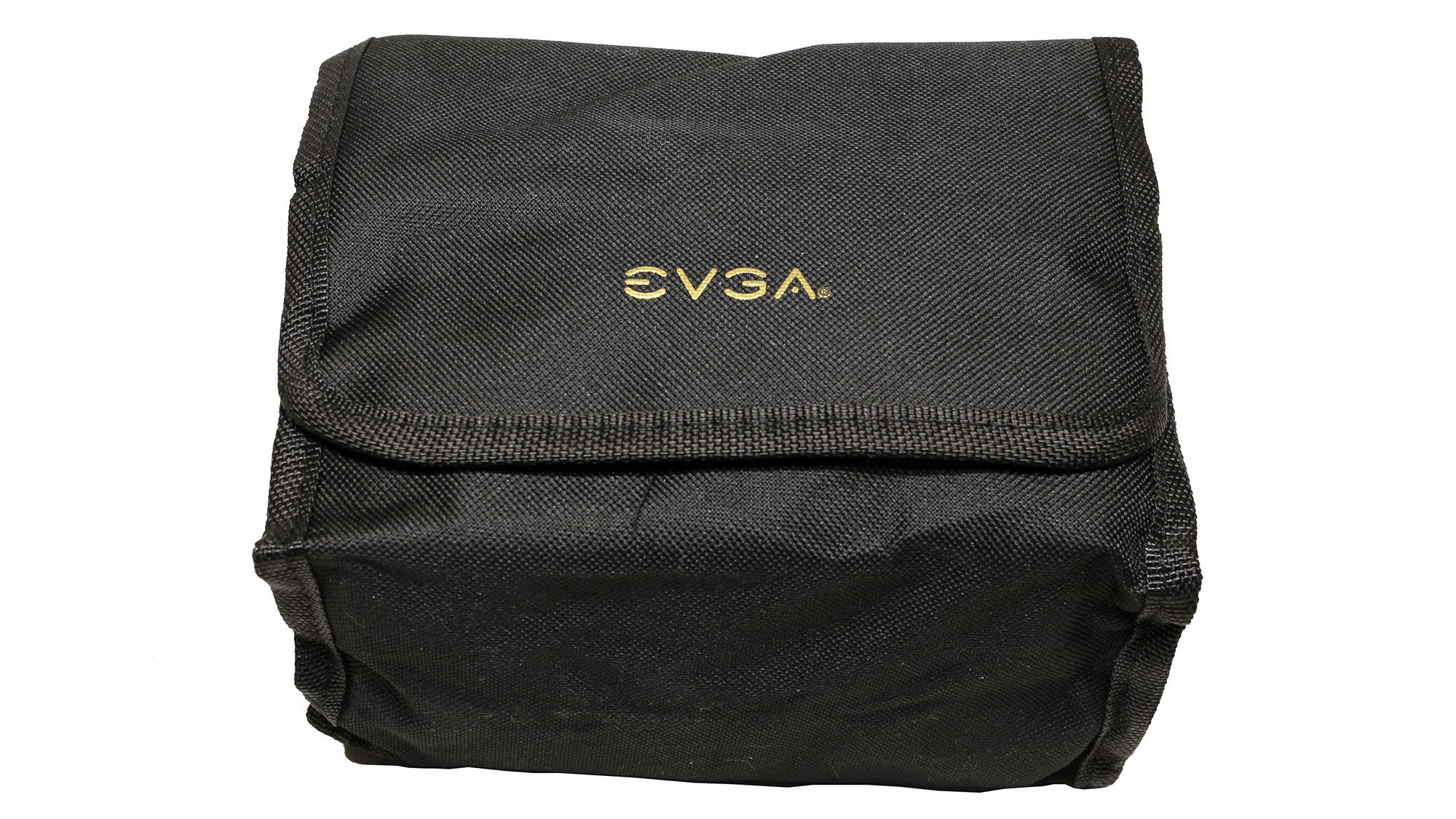
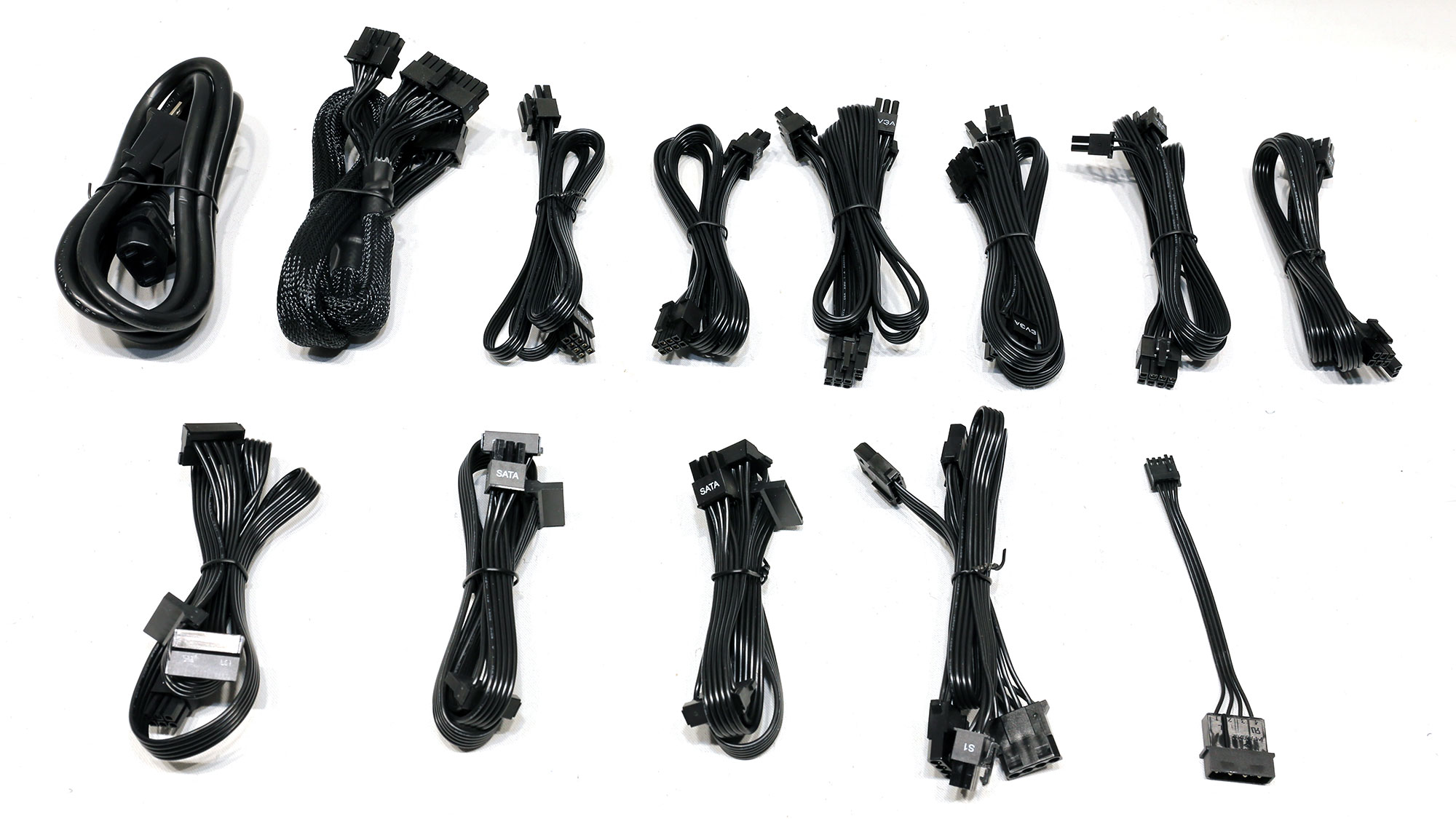
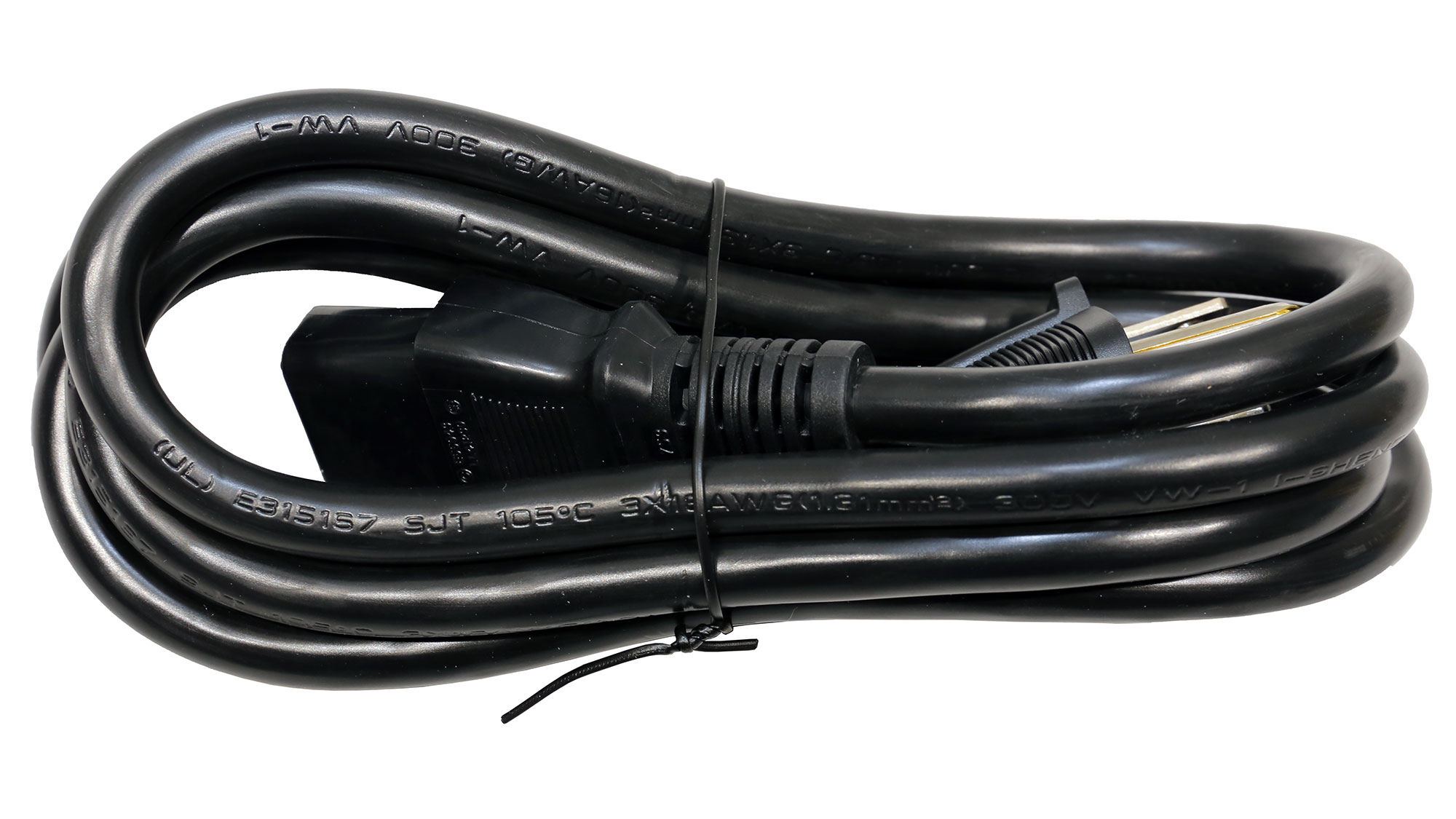
Specifications
| Manufacturer (OEM) | Seasonic |
| Max. DC Output | 850W |
| Efficiency | 80 PLUS Platinum, Cybenetics Platinum (89-91%) |
| Noise | Cybenetics S++ (30-35 dB[A]) |
| Modular | ✓ (fully) |
| Intel C6/C7 Power State Support | ✓ |
| Operating Temperature (Continuous Full Load) | 0 - 40°C |
| Over Voltage Protection | ✓ |
| Under Voltage Protection | ✓ |
| Over Power Protection | ✓ |
| Over Current (+12V) Protection | ✓ |
| Over Temperature Protection | ✓ |
| Short Circuit Protection | ✓ |
| Surge Protection | ✓ |
| Inrush Current Protection | ✓ |
| Fan Failure Protection | ✗ |
| No Load Operation | ✓ |
| Cooling | 135mm Fluid Dynamic Bearing Fan (HA13525H12F-Z) |
| Semi-Passive Operation | ✓ (selectable) |
| Dimensions (W x H x D) | 150 x 85 x 140mm |
| Weight | 1.76 kg (3.88 lb) |
| Form Factor | ATX12V v2.52, EPS 2.92 |
| Warranty | 10 Years |
Power Specifications
| Rail | 3.3V | 5V | 12V | 5VSB | -12V | |
| Max. Power | Amps | 24 | 24 | 70.8 | 3 | 0.5 |
| Watts | 120 | 850 | 15 | 6 | ||
| Total Max. Power (W) | 750 |
Cables and Connectors
| Description | Cable Count | Connector Count (Total) | Gauge | In Cable Capacitors |
|---|---|---|---|---|
| ATX connector 20+4 pin (610mm) | 1 | 1 | 18-22AWG | No |
| 4+4 pin EPS12V (700mm) | 2 | 2 | 18AWG | No |
| 6+2 pin PCIe (700mm+125mm) | 2 | 4 | 16-18AWG | No |
| 6+2 pin PCIe (700mm) | 2 | 2 | 18AWG | No |
| SATA (550mm+100mm+100mm) | 3 | 9 | 18AWG | No |
| 4-pin Molex (550mm+100mm+100mm+100mm) | 1 | 4 | 18AWG | No |
| FDD Adapter (105mm) | 1 | 1 | 22AWG | No |
| AC Power Cord (1400mm) - C13 coupler | 1 | 1 | 16AWG | - |
There are enough connectors to allow the PSU to deliver its full power without problems, including two EPS, six PCIe, nine SATA, and four 4-pin Molex connectors. A Berg adapter is also provided for those of you with vintage parts (floppy drives).
Cable length is satisfactory, but the distance between the peripheral connectors is short at 100mm. Lastly, there are no in-cable caps, making the cables less flexible and bulky, and only the two PCIe cables with two connectors each use thicker 16AWG gauges.


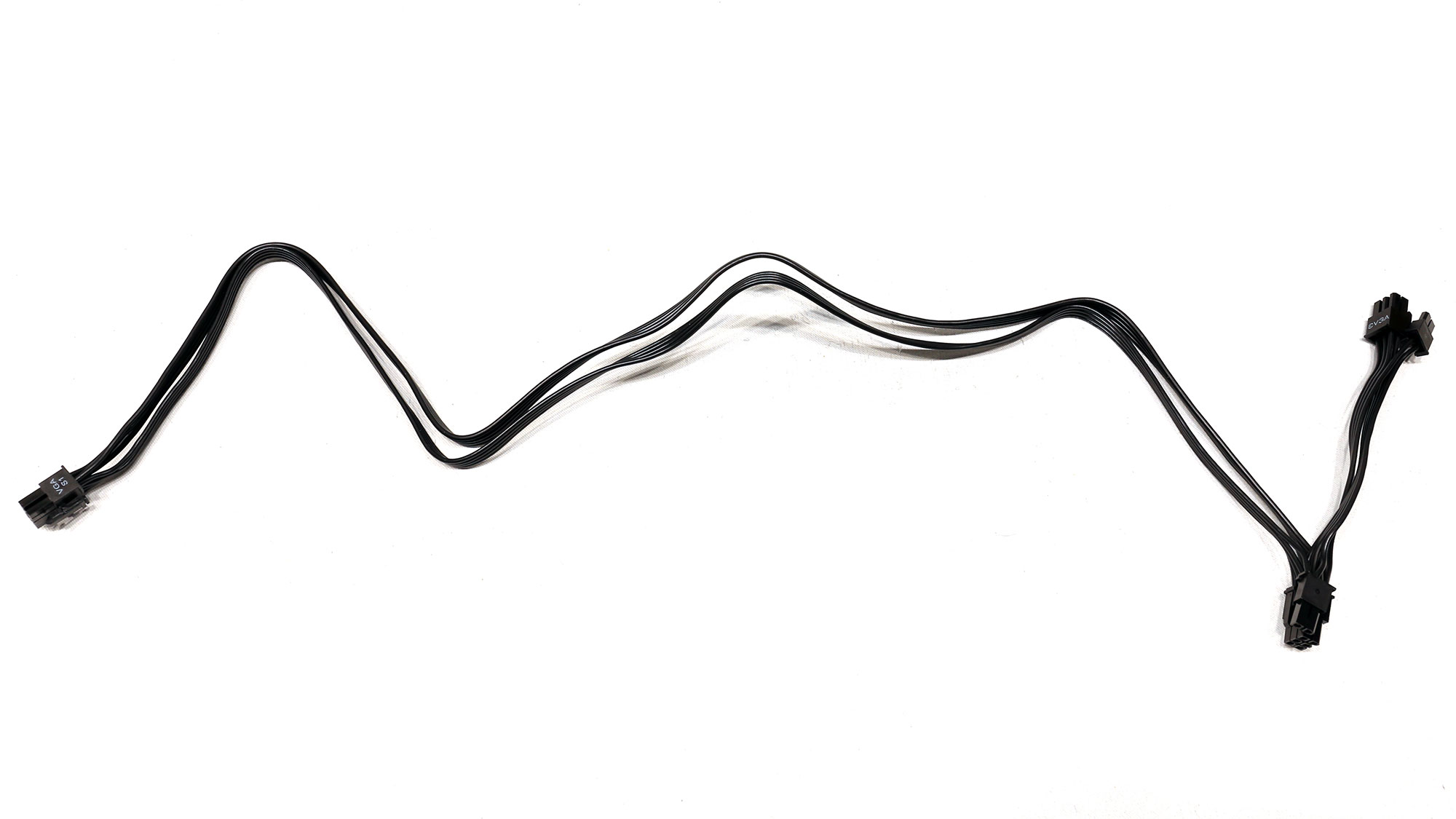
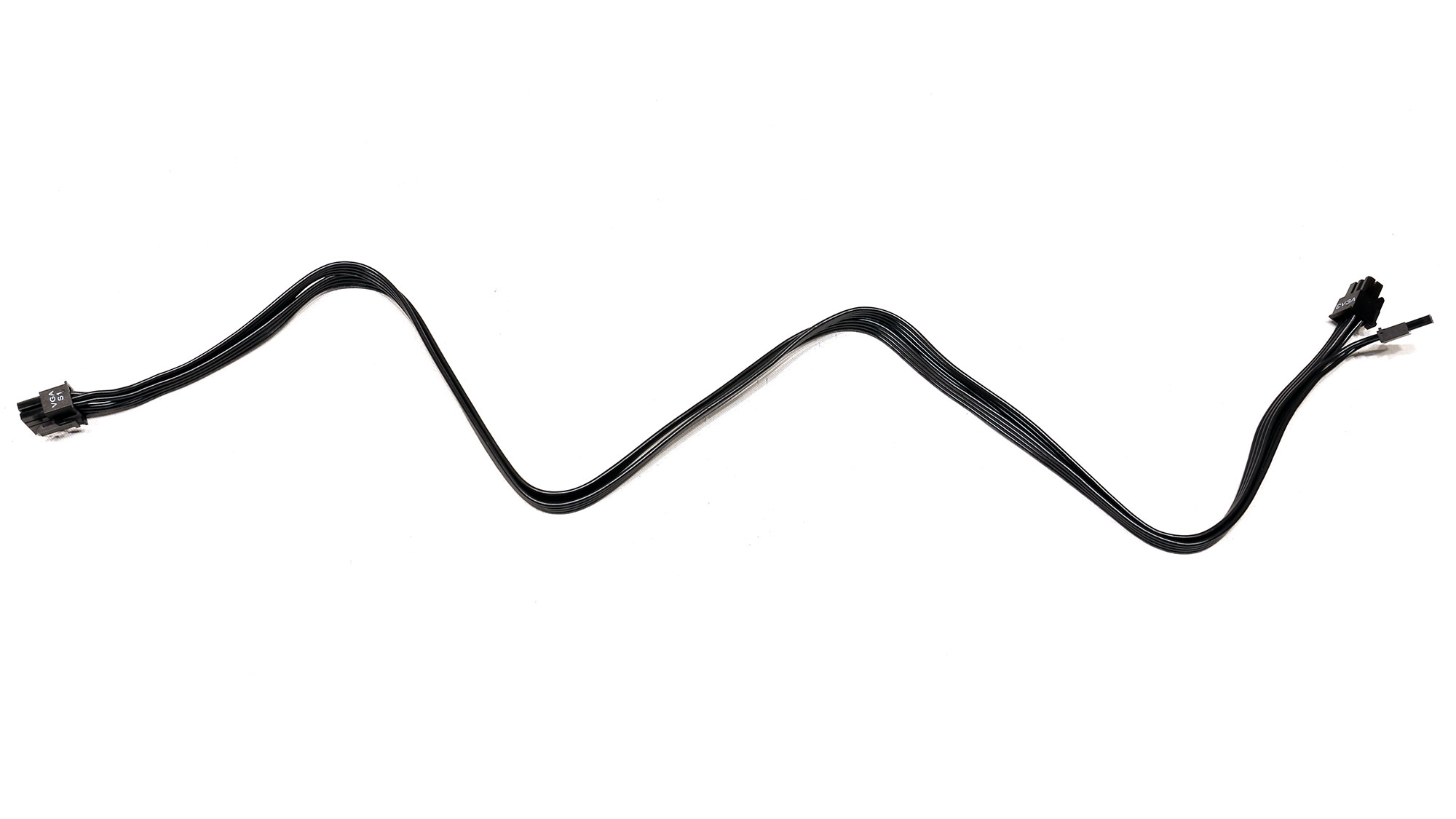
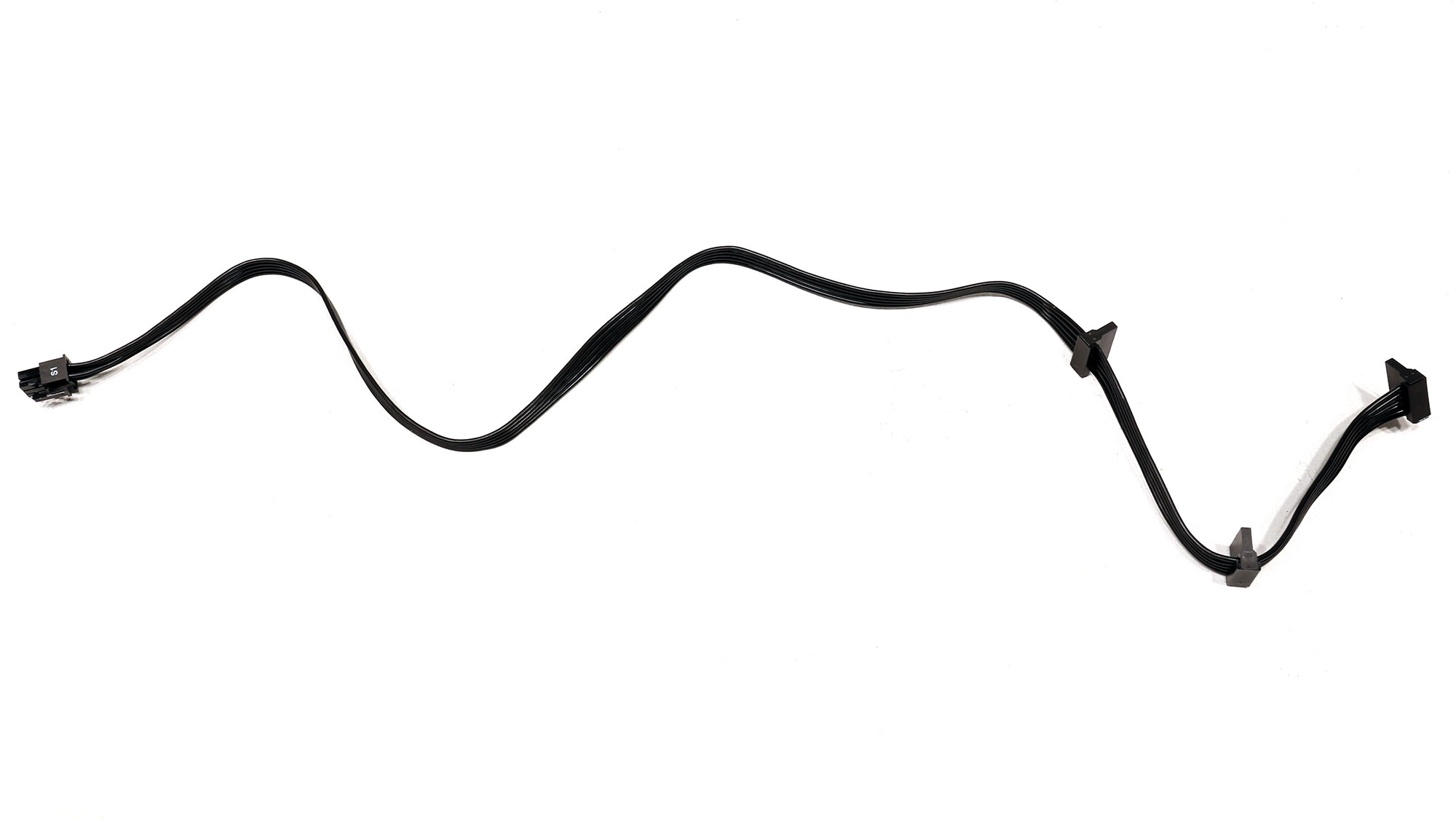
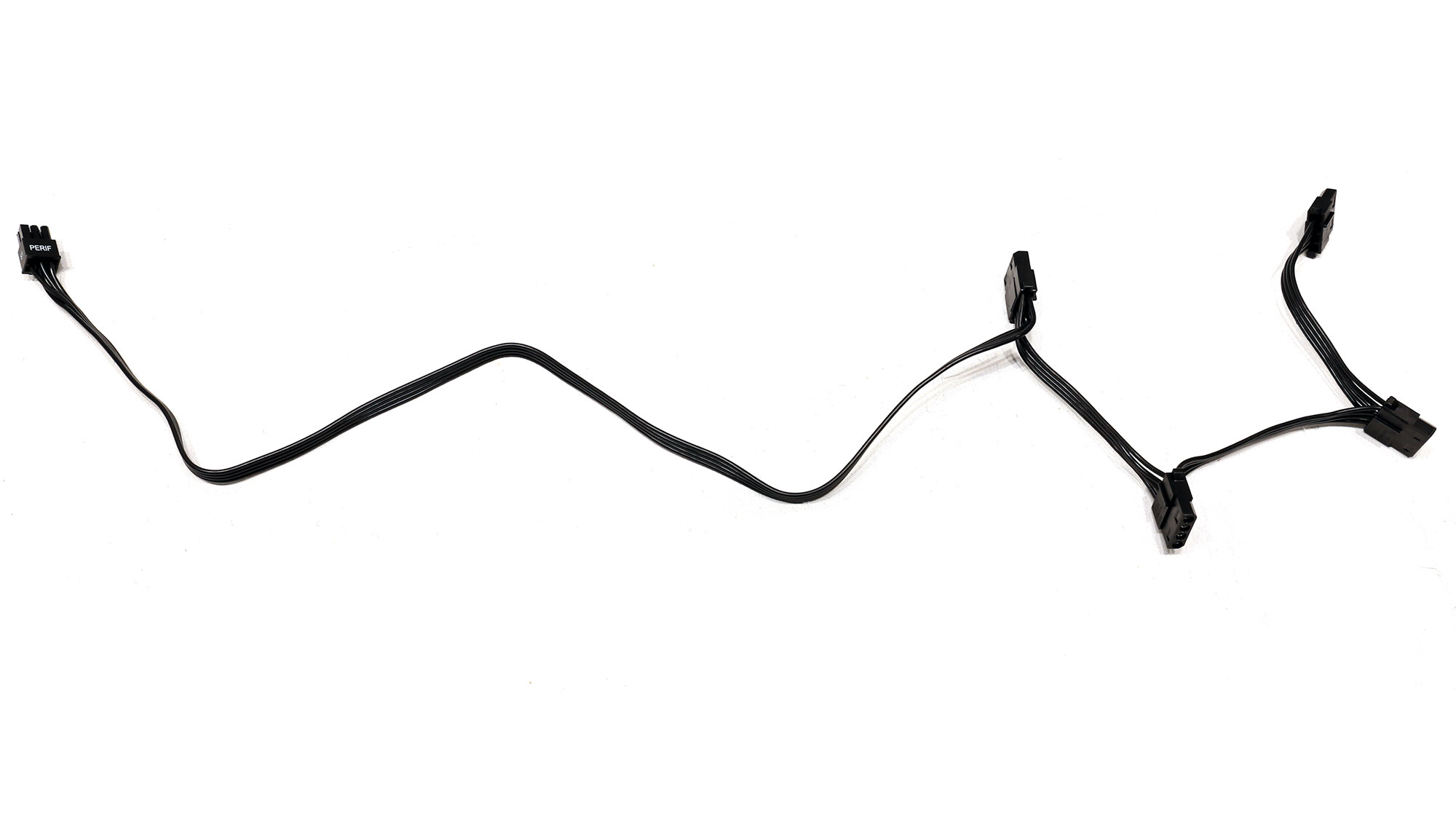
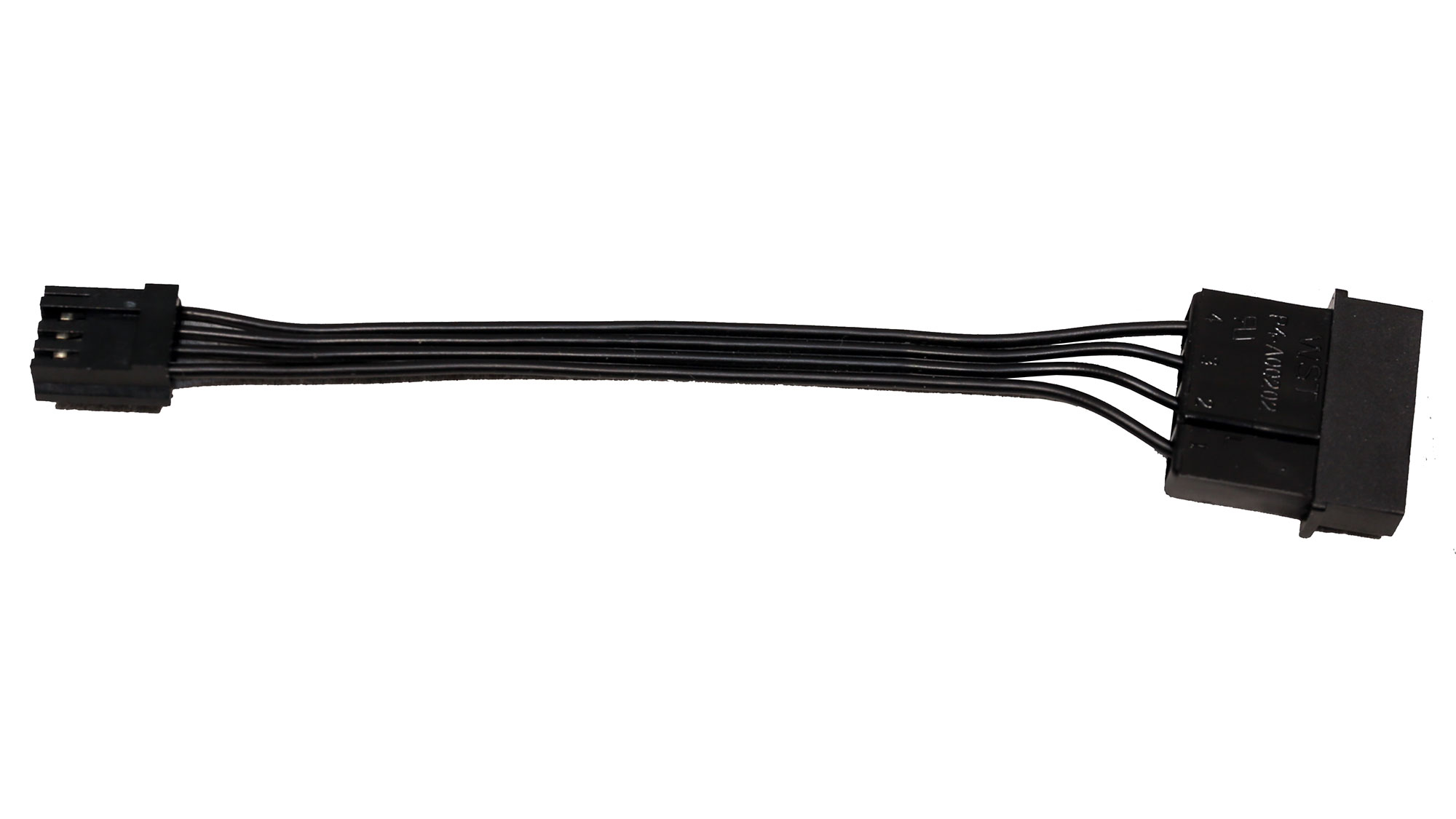
Component Analysis
We strongly encourage you to have a look at our PSUs 101 article, which provides valuable information about PSUs and their operation, allowing you to better understand the components we're about to discuss.
Get Tom's Hardware's best news and in-depth reviews, straight to your inbox.
| General Data | - |
| Manufacturer (OEM) | Seasonic |
| PCB Type | Double Sided |
| Primary Side | - |
| Transient Filter | 4x Y caps, 2x X caps, 2x CM chokes, 1x MOV, 1x Champion CM02X (Discharge IC) |
| Inrush Protection | NTC Thermistor MF72-5D20L (5 Ohm) & Relay |
| Bridge Rectifier(s) | 2x GBU15JL (600V, 15A @ 115°C) |
| APFC MOSFETs | 2x Infineon IPA60R125P6 (600V, 19A @ 100°C, Rds(on): 0.125Ohm) |
| APFC Boost Diode | 1x STMicroelectronics STPSC8H065D (650V, 8A @ 140°C) |
| Bulk Cap(s) | 2x Nippon Chemi-Con (420V, 390uF each or 780uF combined, 2,000h @ 105°C, KMR) |
| Main Switchers | 4x Infineon IPA60R160P6 (600V, 15A @ 100°C, Rds(on): 0.16Ohm) |
| APFC Controller | Champion CM6500UNX |
| Resonant Controller | Champion CU6901V |
| Topology |
Primary side: APFC, Full-Bridge & LLC converter Secondary side: Synchronous Rectification & DC-DC converters |
| Secondary Side | - |
| +12V MOSFETs | 4x Nexperia PSMN1R0-40YLD (40V, 198A @ 100°C, Rds(on): 1.93mOhm) |
| 5V & 3.3V | DC-DC Converters: 6x Nexperia PSMN1R0-30YLD (30V, 255A @ 100°C, Rds(on): 1.7mOhm) PWM Controller(s): ANPEC APW7159C |
| Filtering Capacitors |
Electrolytic: 6x Nippon Chemi-Con (2-5,000h @ 105°C, KZE), 1x Nippon Chemi-Con (5-6,000h @ 105°C, KZH), 2x Nippon Chemi-Con (4-10,000h @ 105°C, KY), 2x Rubycon (3-6,000h @ 105°C, YXG) |
| Supervisor IC | Weltrend WT7527RA (OCP, OVP, UVP, SCP, PG) & Weltrend WT51F104 (Firmware OPP) |
| Fan Controller | Weltrend WT51F104 |
| Fan Model | Hong Hua HA13525H12F-Z (135mm, 12V, 0.50A, Fluid Dynamic Bearing Fan) |
| 5VSB Circuit | - |
| Rectifier | 1x MCC MRB1045ULPS SBR (45V, 10A) |
| Standby PWM Controller | Excelliance MOS EM8569C |
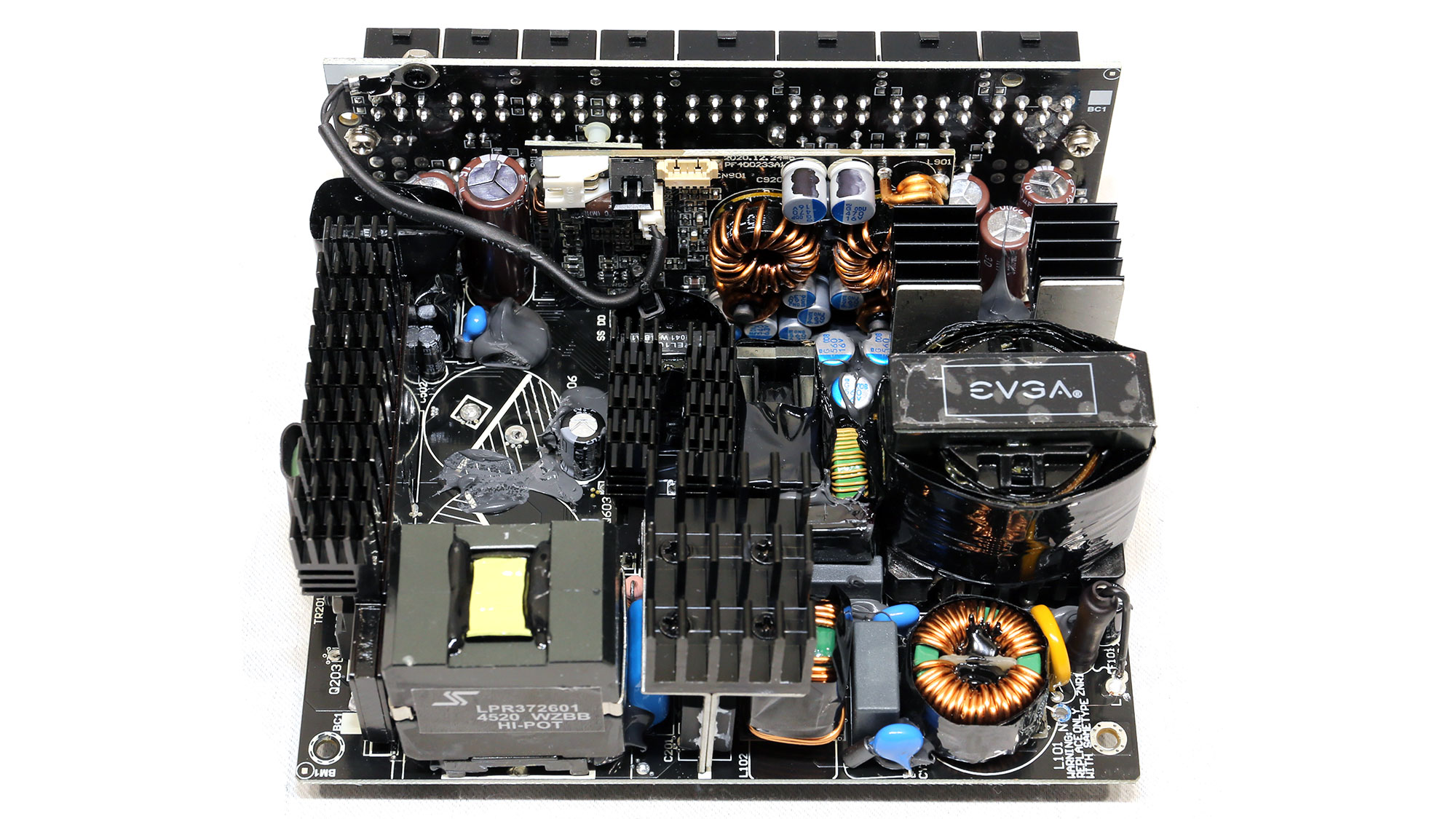


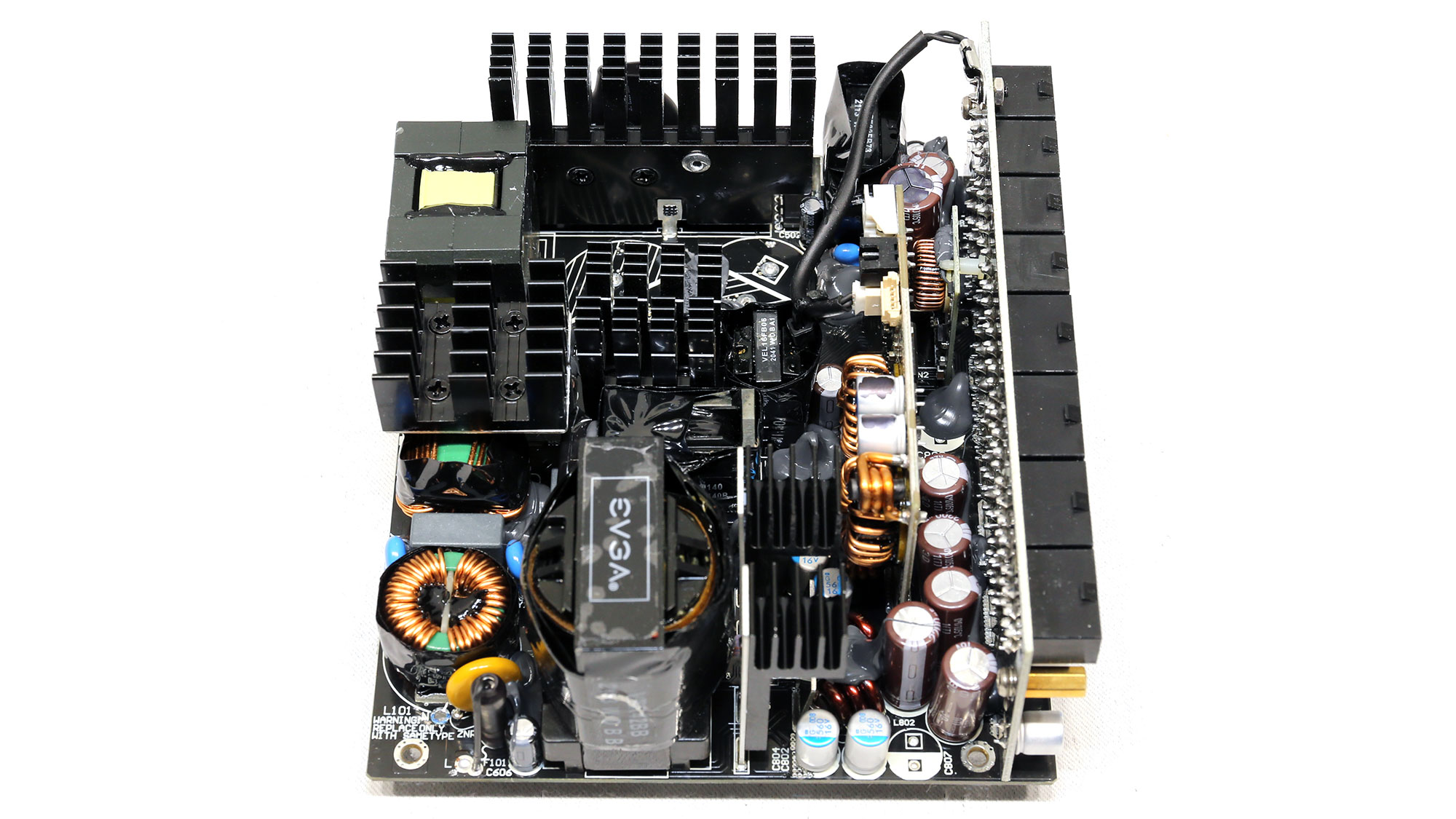
The PCB is small, so it is overpopulated. With more space between parts, the airflow would be better and the fan wouldn't have to spin at high speeds to remove the heat. Compared to the original Seasonic platform, EVGA's unit features an MCU which, besides the firmware OPP, as EVGA calls it, also handles over-temperature protection and controls the fan's speed. A wire is used for an NTC thermistor that provides information on the MCU hosted on the same daughter-board with the DC-DC converters. This wire looks completely out of place in this PSU. Normally, this signal should be routed through the PCB, but for this to happen, a PCB redesign is required.
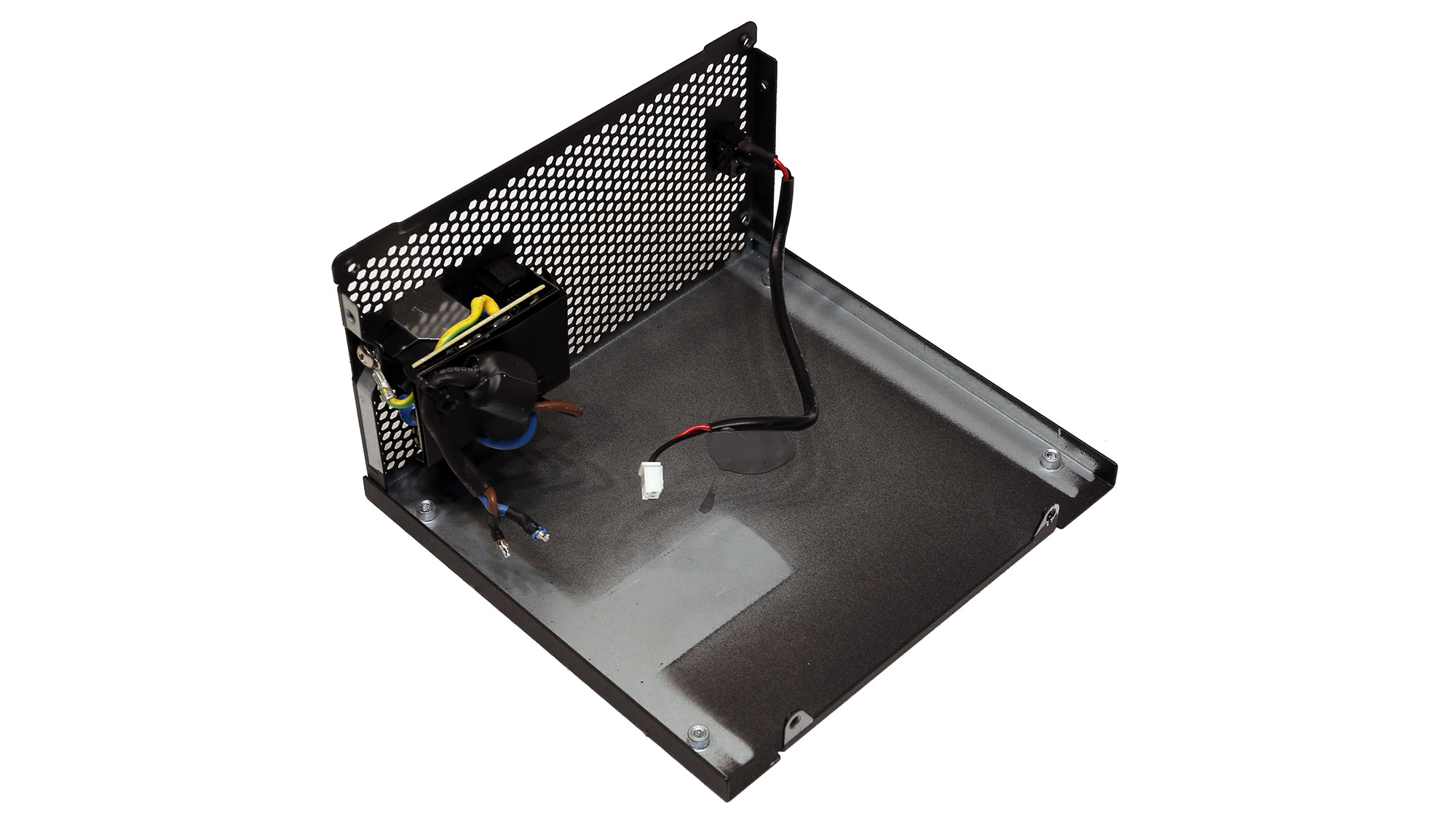
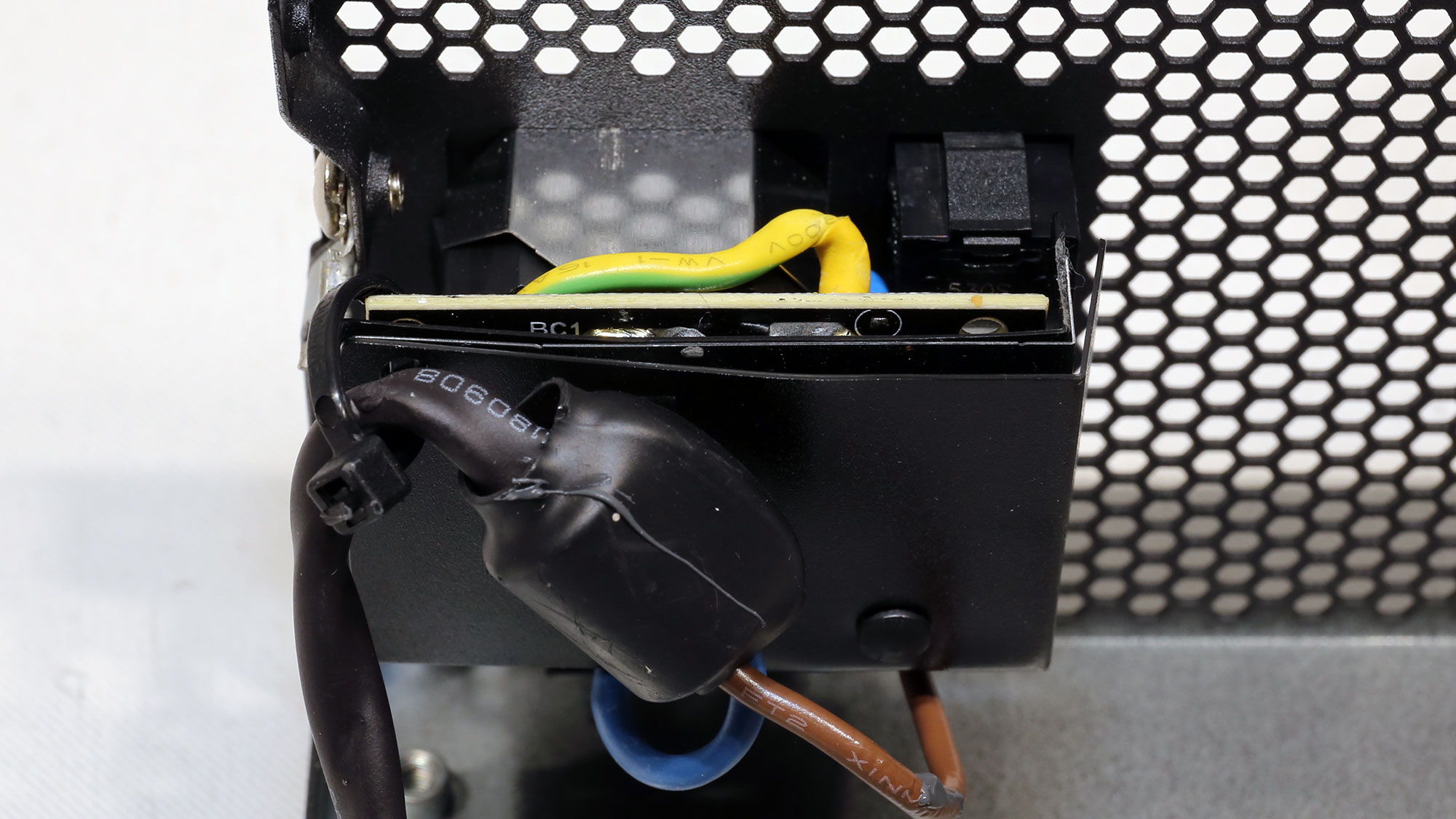
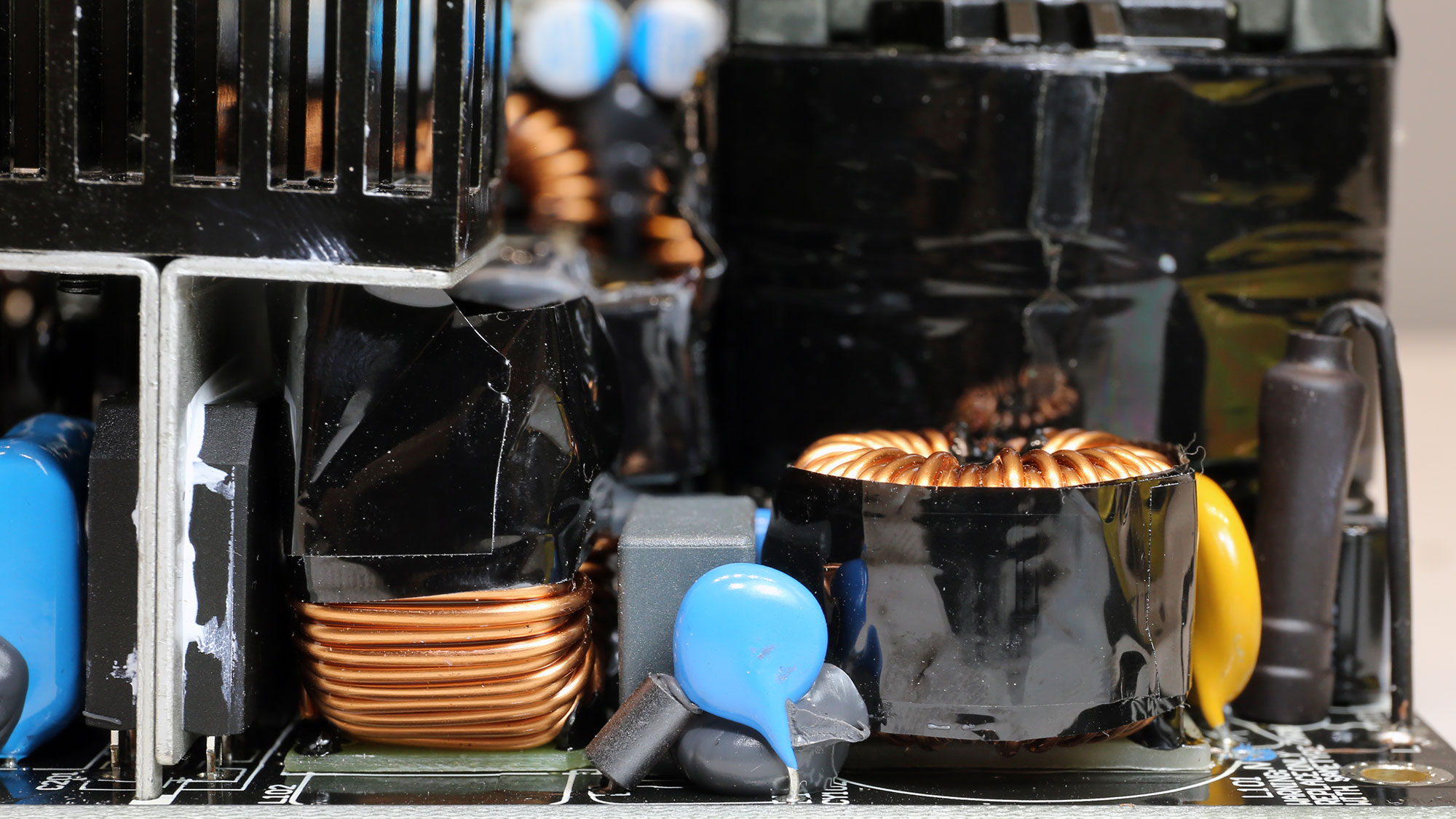
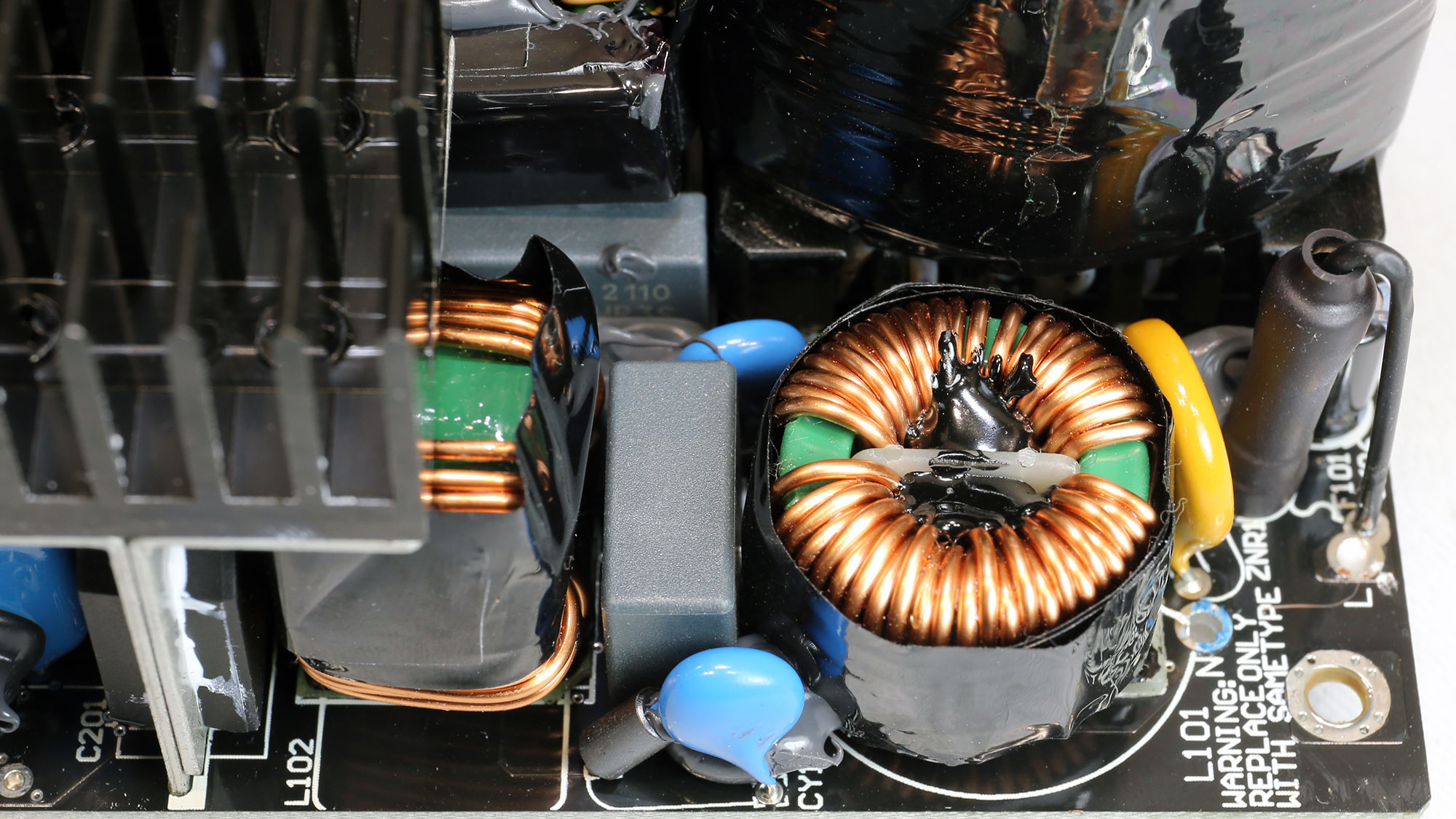
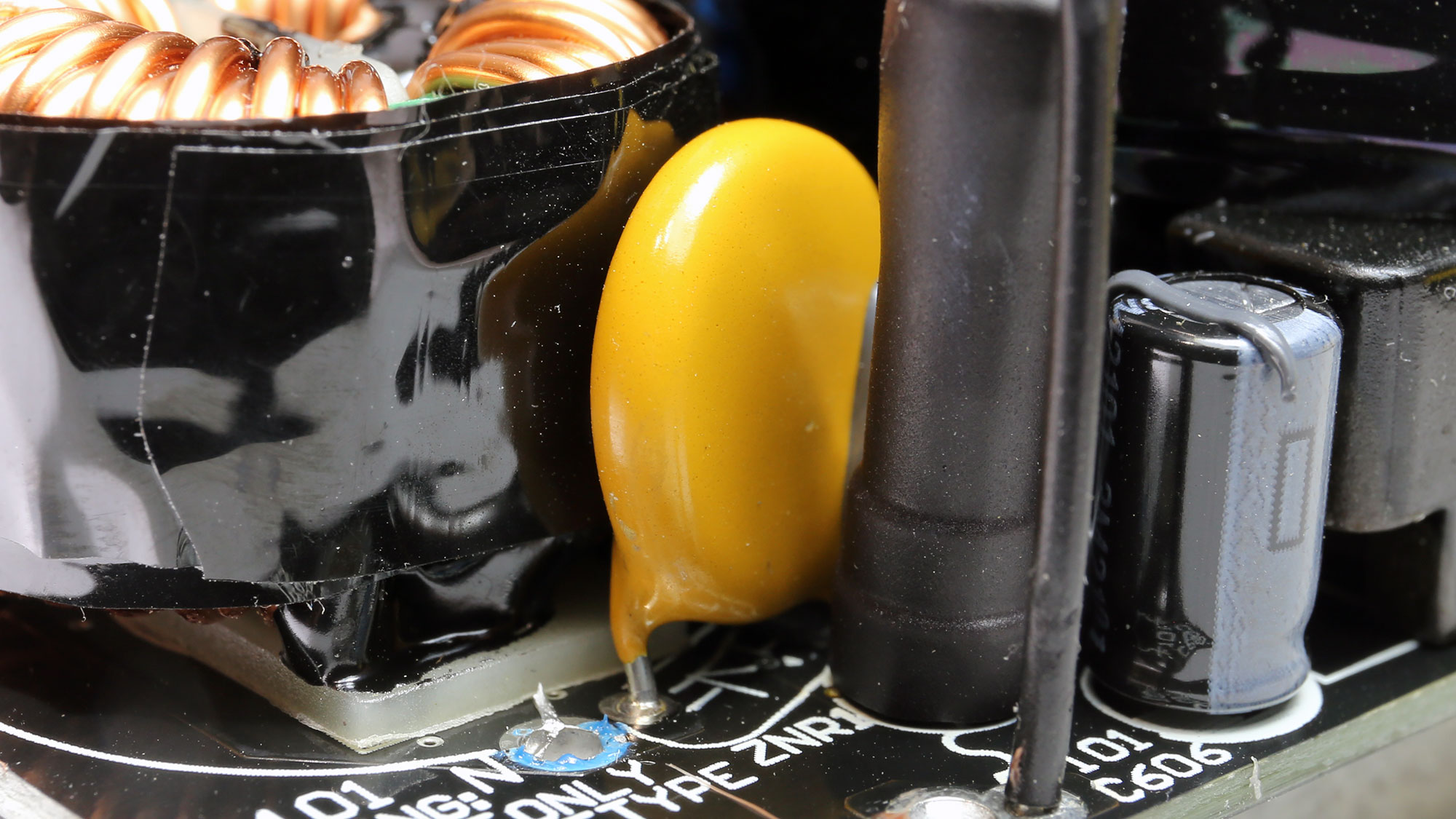
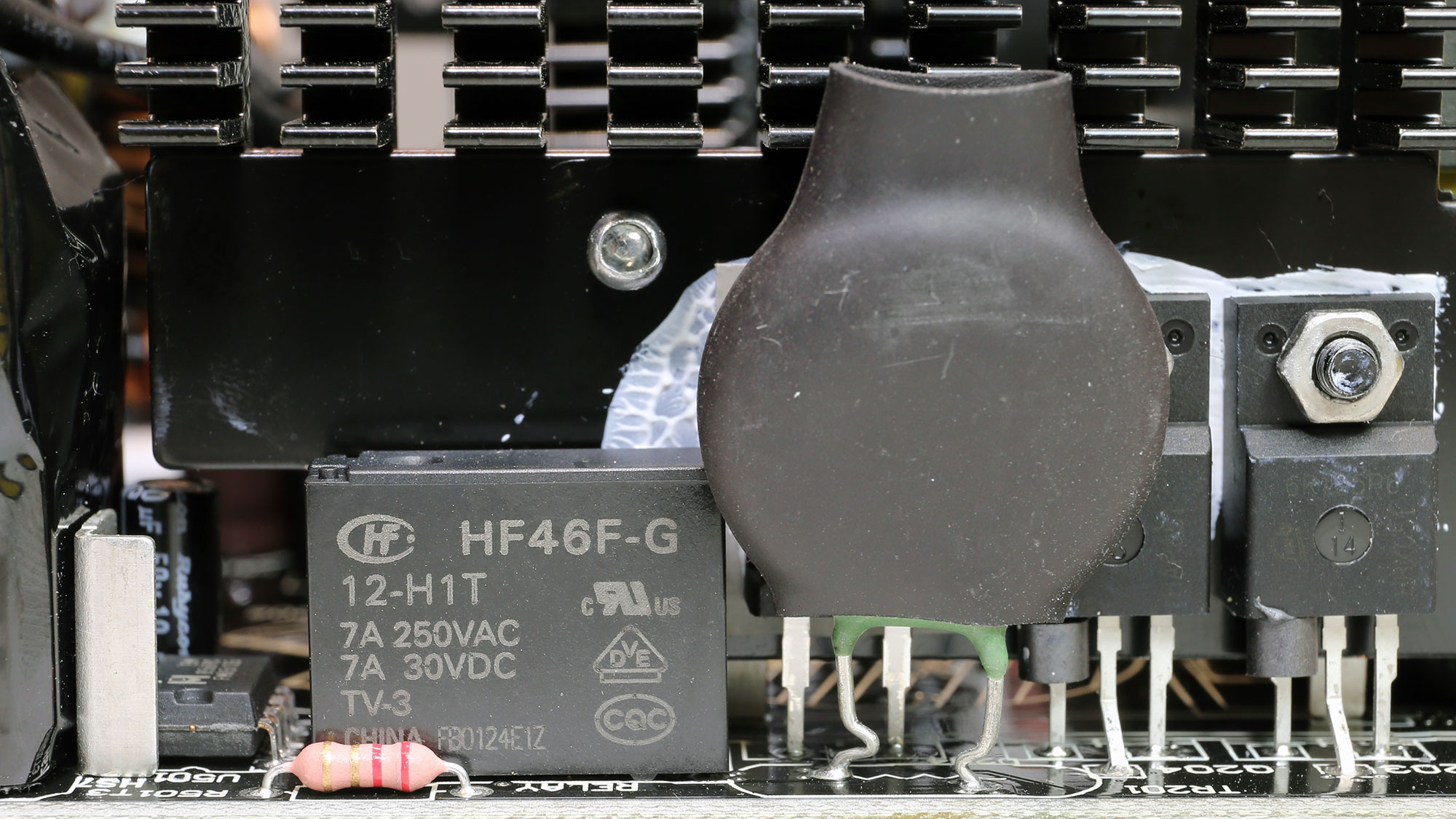
The transient filter includes all necessary parts, but we found some EMI spikes with the AVG EMI detector. The input filter includes an MOV for protection against voltage surges, and we also found an NTC thermistor and relay combination for suppressing high inrush currents.
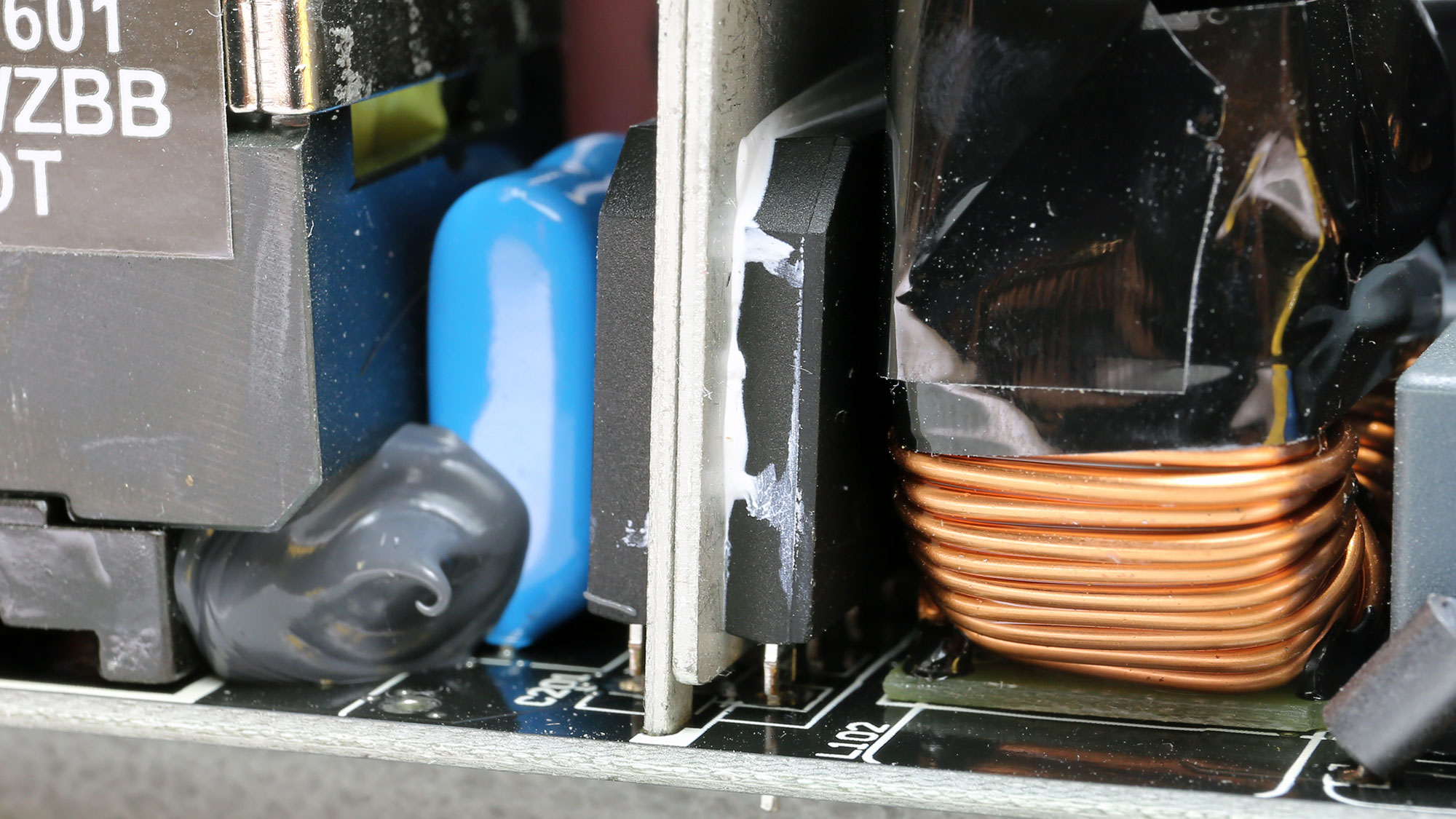
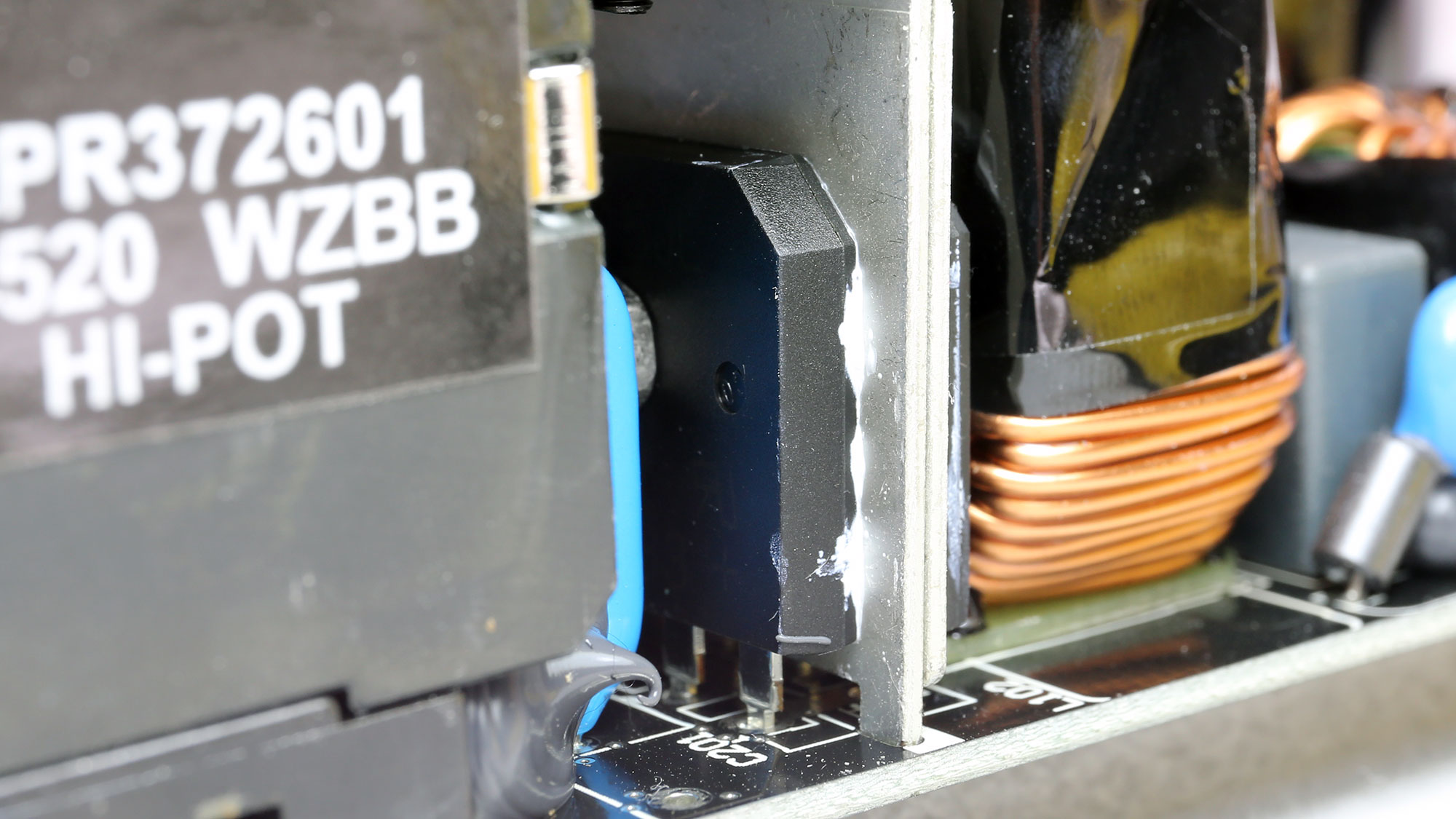
The bridge rectifiers can handle up to 30A of current, combined.
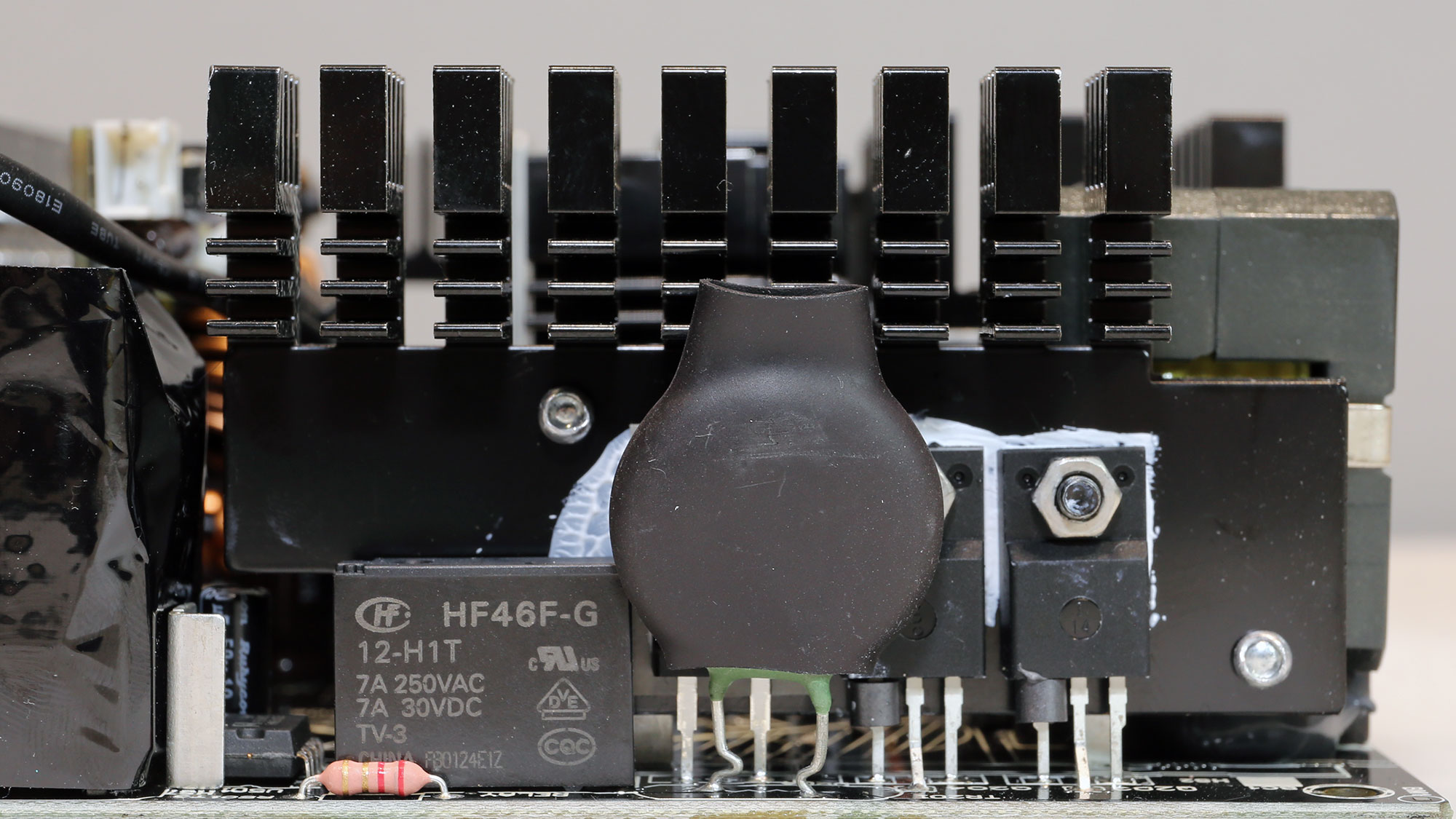
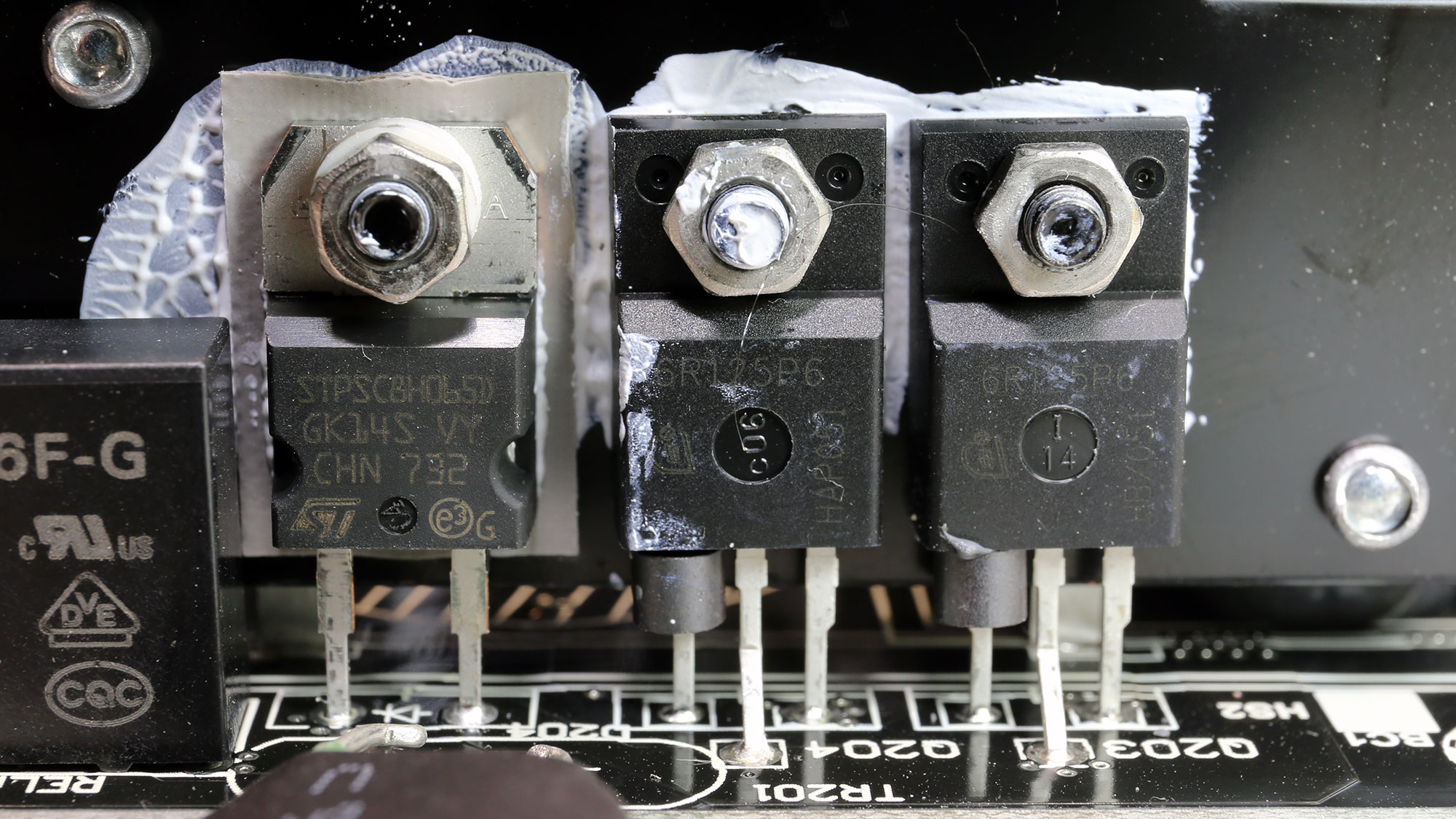


The APFC converter uses two Infineon FETs and a single, STMicroelectronics, boost diode. The bulk caps are by Chemi-Con, and their combined capacity reaches 780uF.
The APFC controller is the Champion CM6500UN, a high-performance controller. Still, this circuit needs tuning for higher PF readings, especially with 230V input.

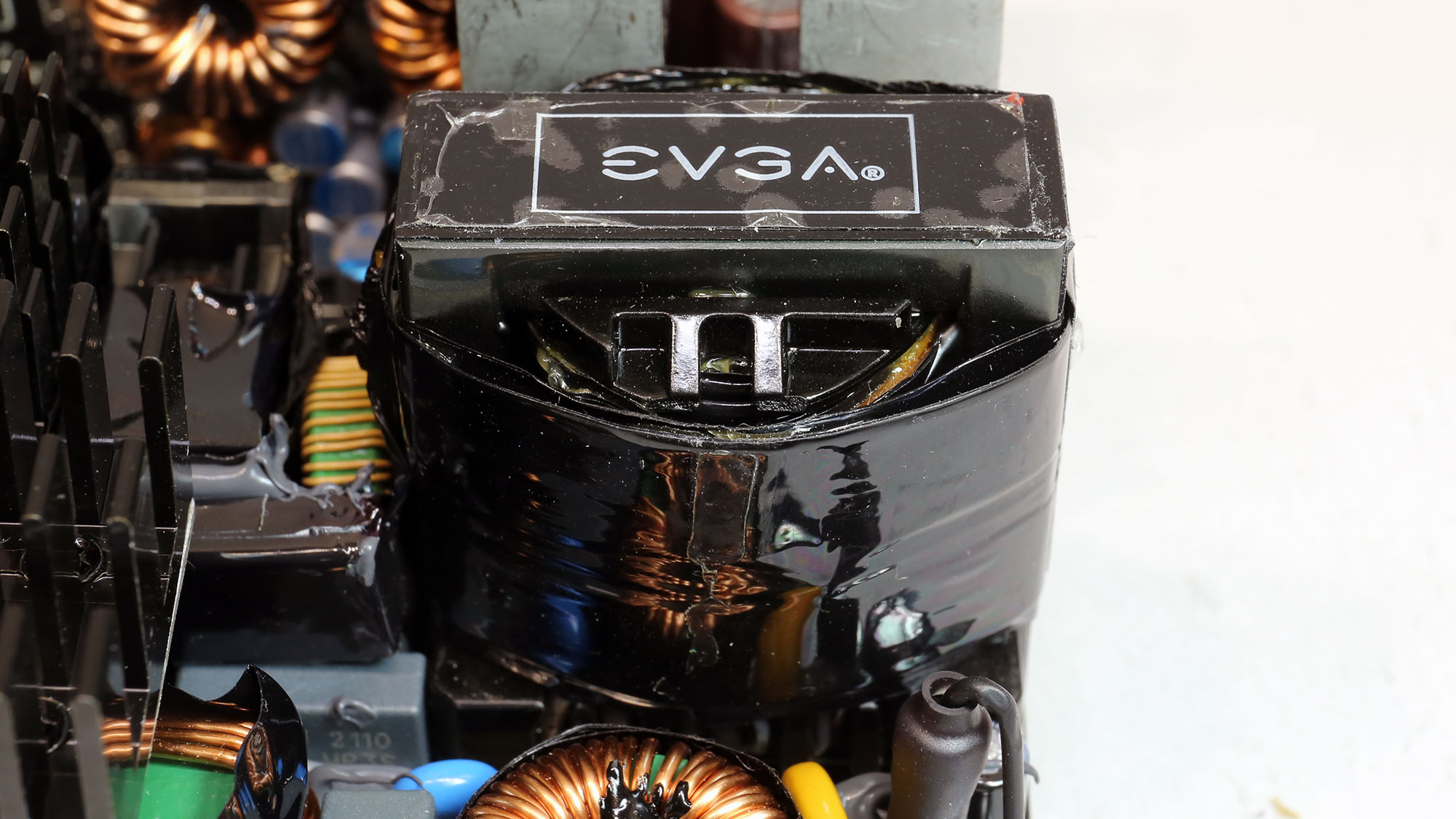
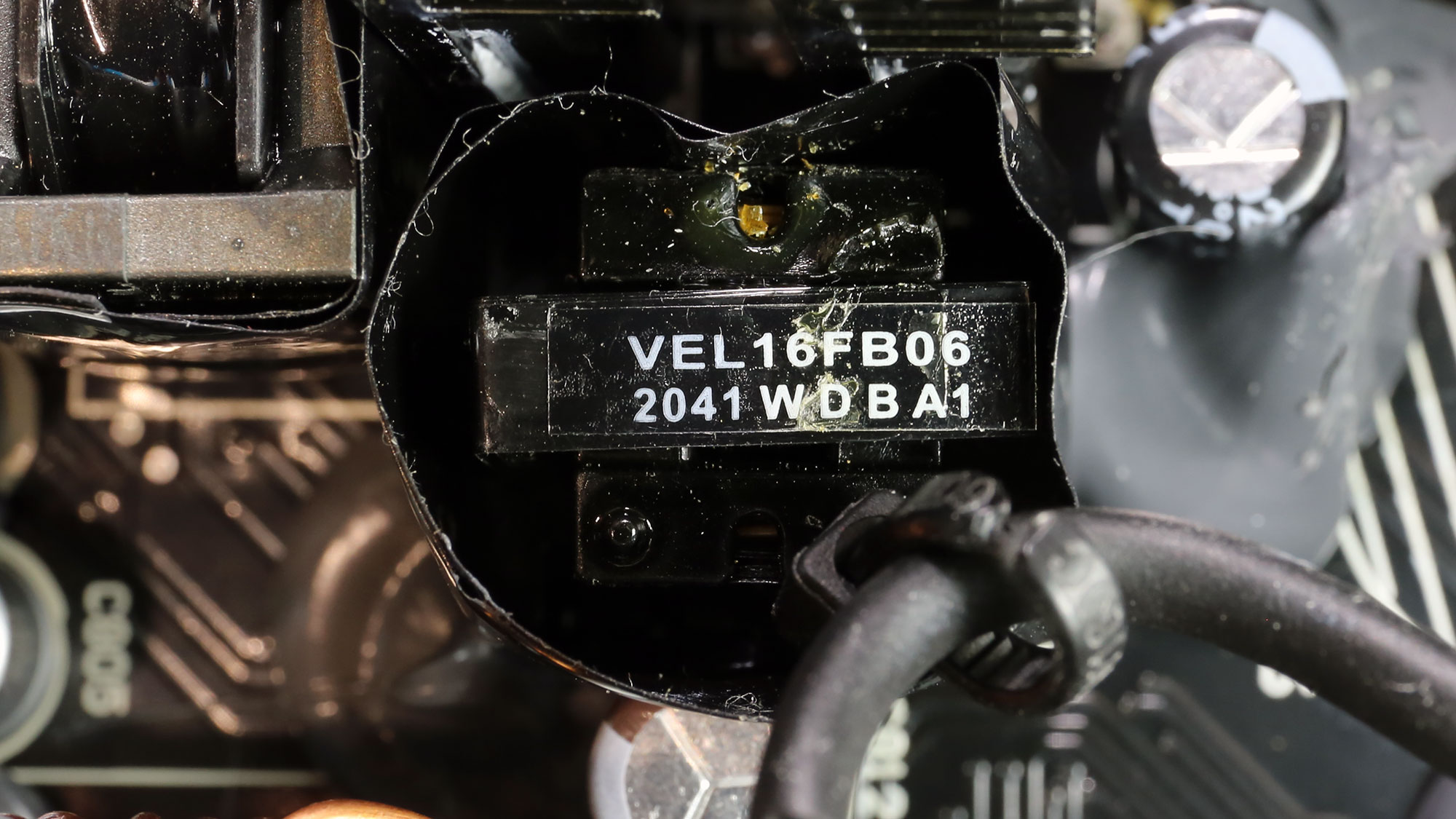
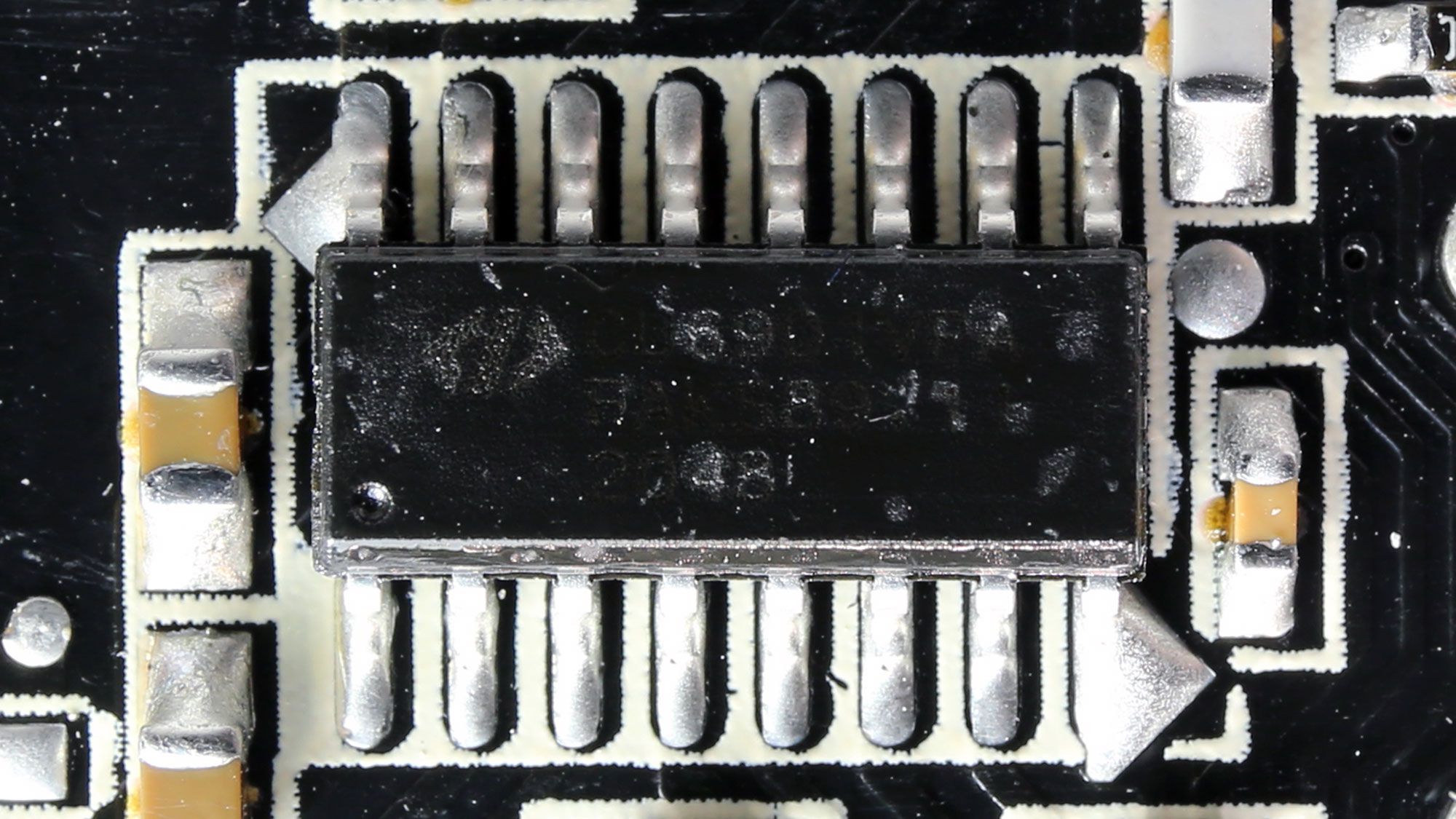
The main FETs are installed into a full-bridge topology, and an LLC resonant converter is also used to boost efficiency. The resonant controller is the Champion CU6901V, supporting burst operation for higher efficiency at super-light loads.

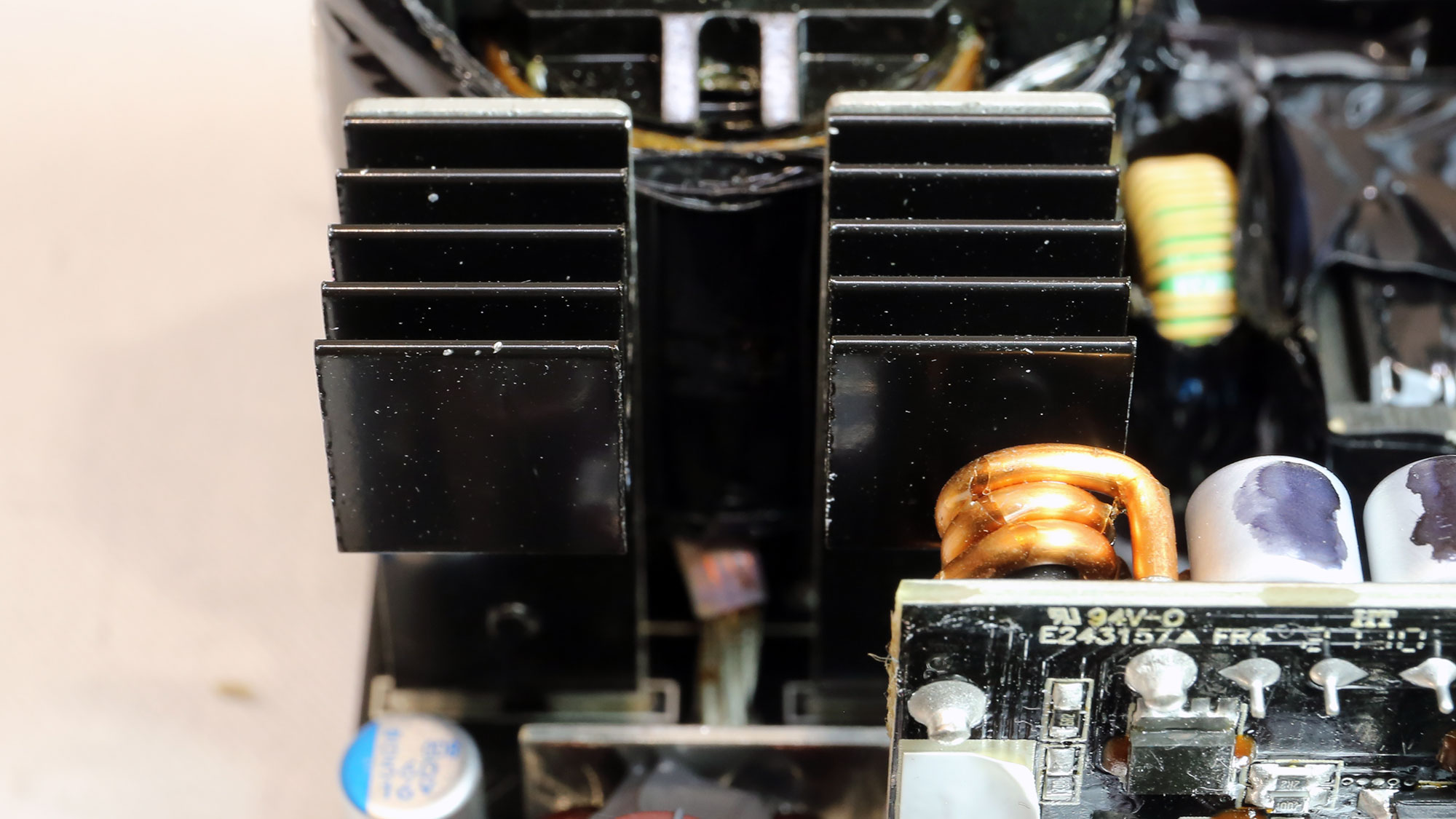

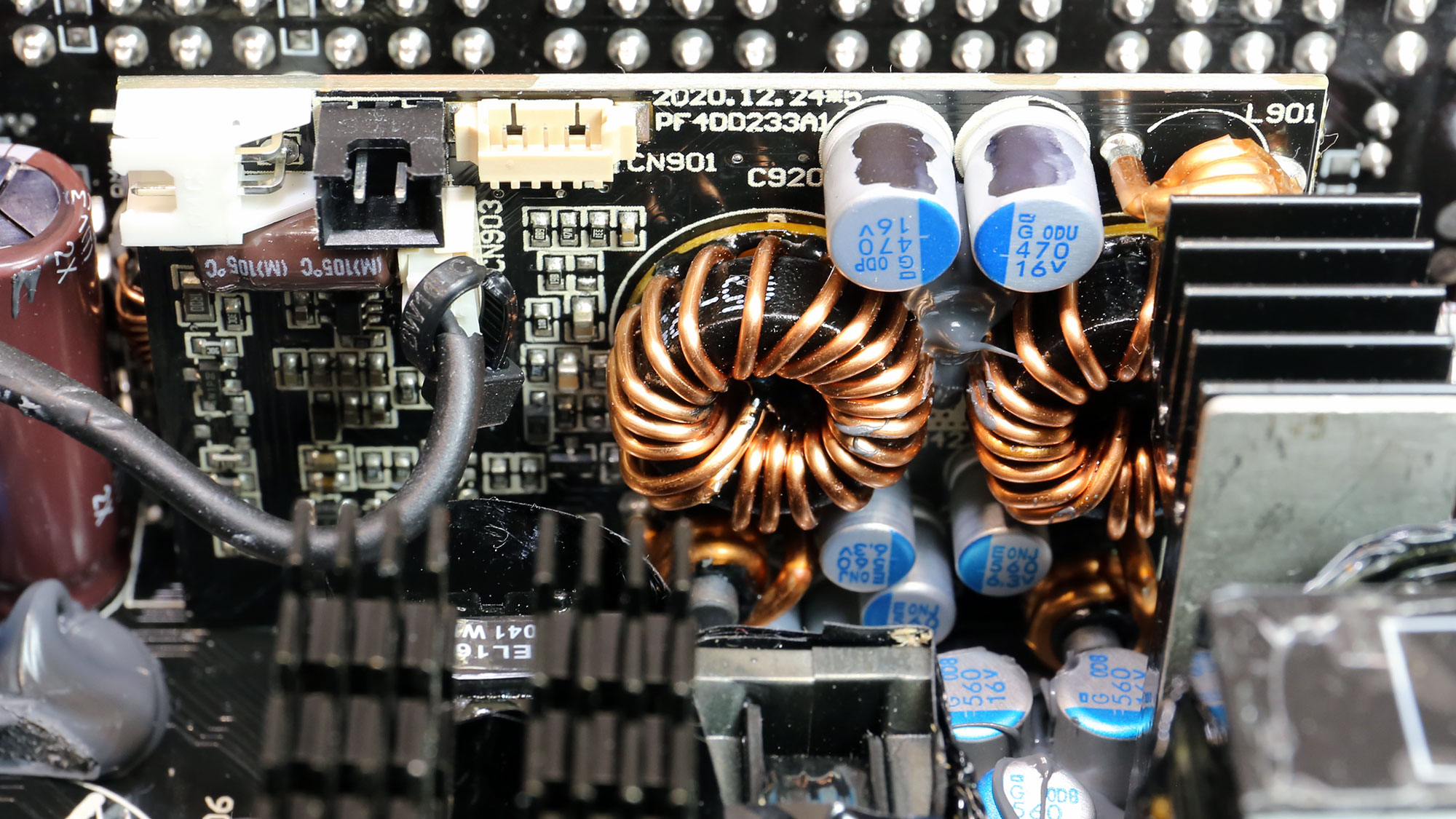
Four Nexperia FETs handle the 12V rail. They don't come in contact with the PSU's chassis, as in the 1000 P6 model. The minor rails are generated through a pair of DC-DC converters.
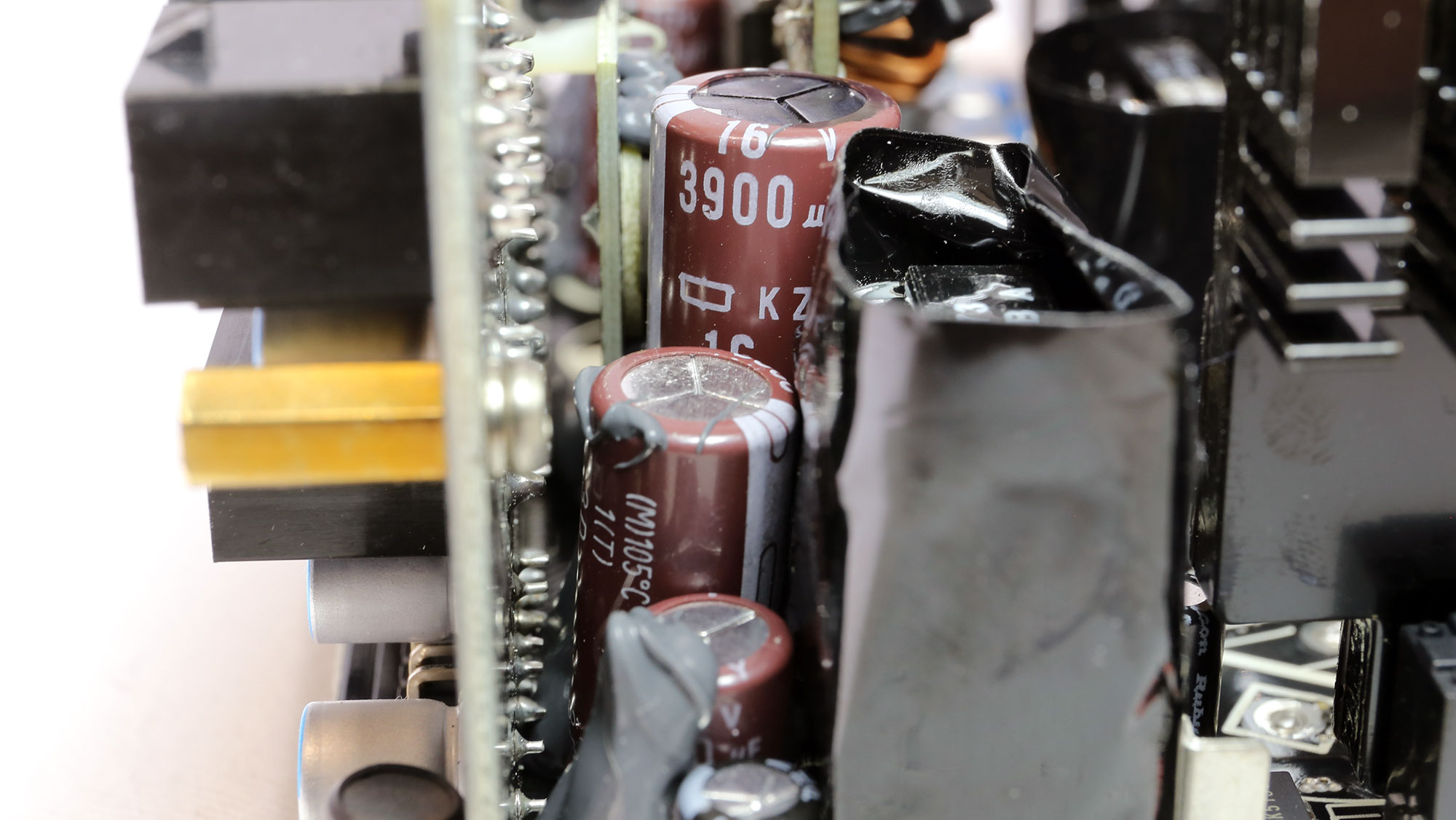

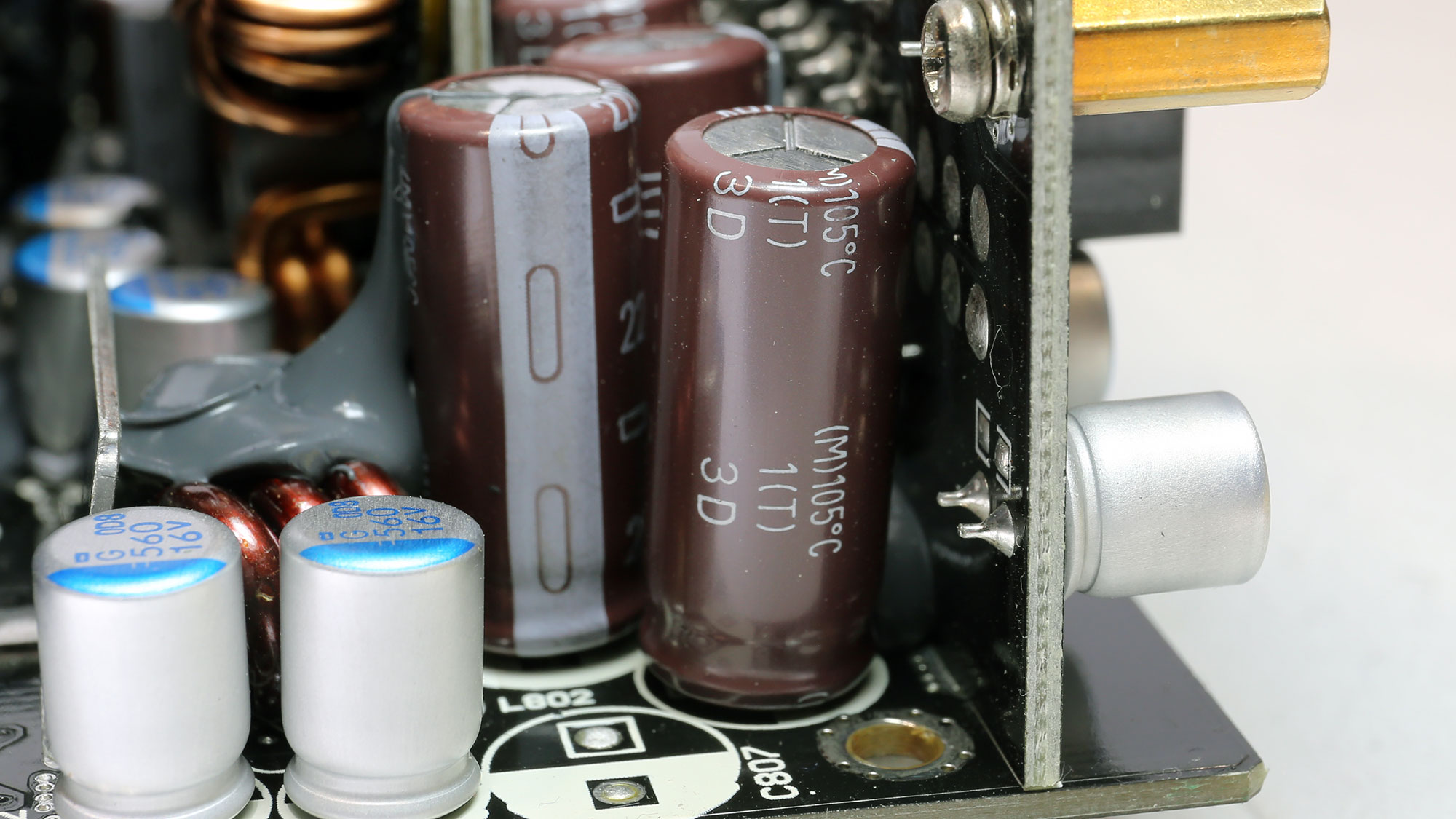
Japanese manufacturers provide the filtering caps. Besides electrolytic caps, many polymer caps are also used.

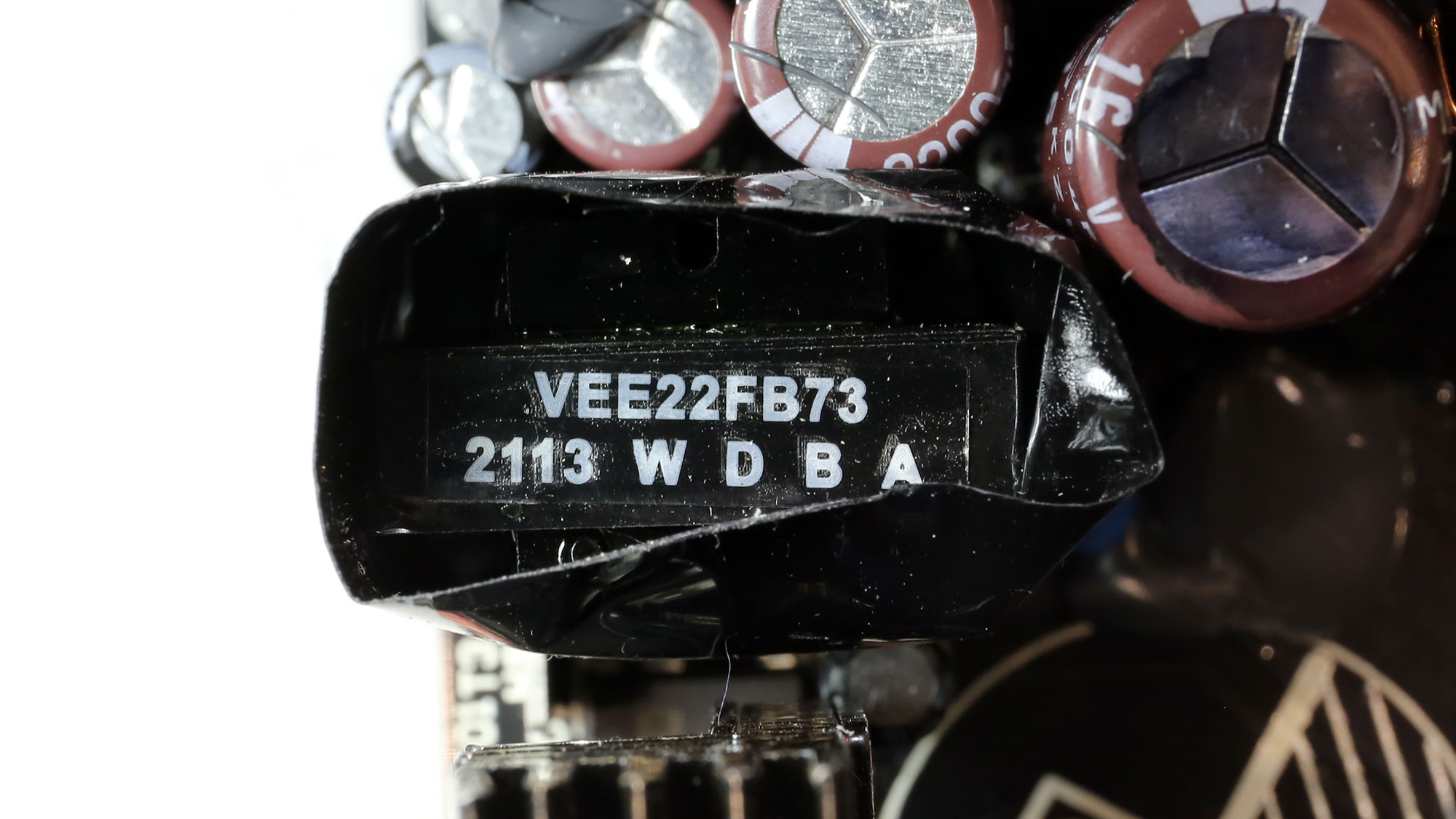
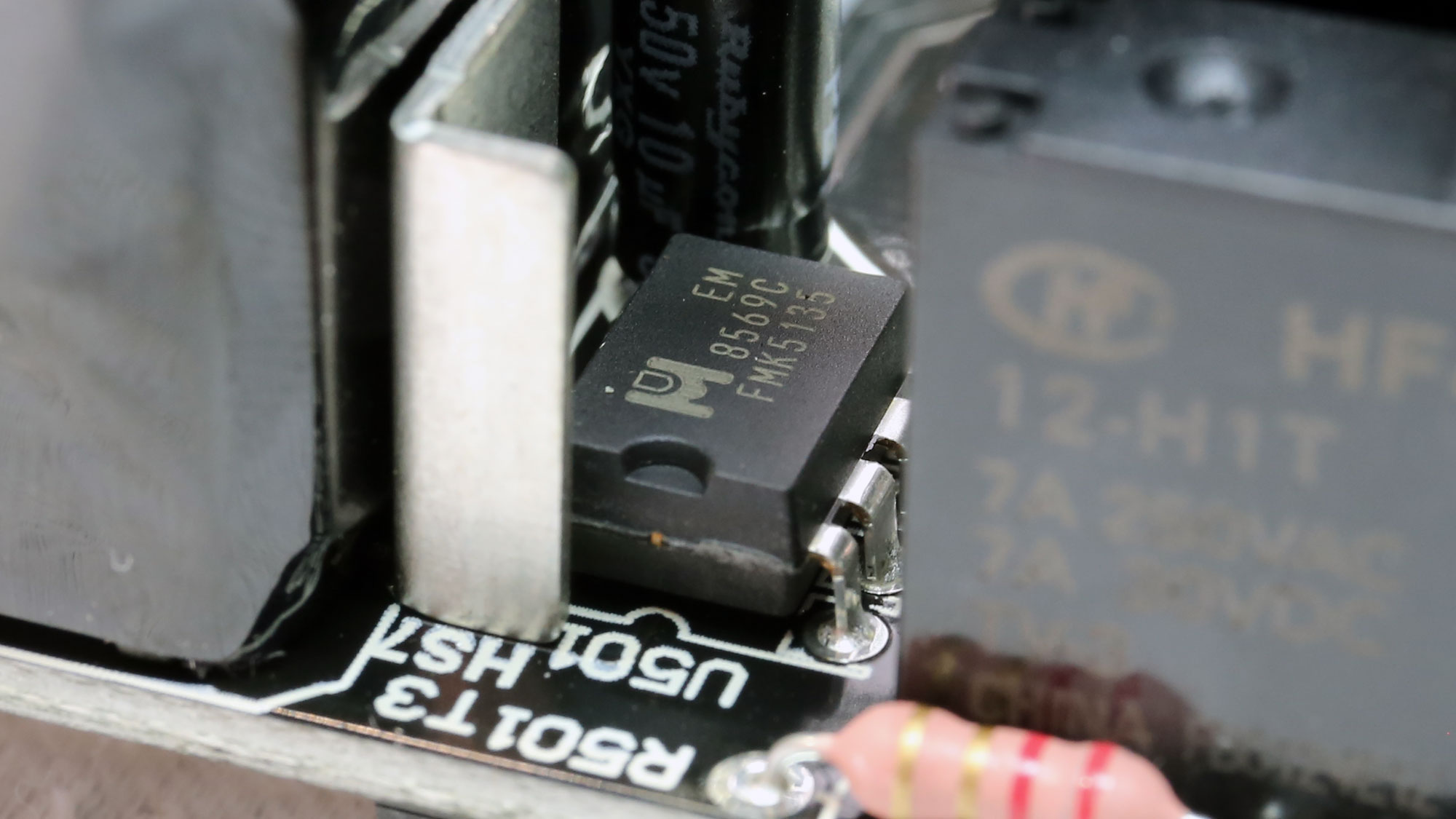
The standby PWM controller is an Excelliance MOS EM8569C. An SBR rectifier is used on the 5VSB rail's secondary side.


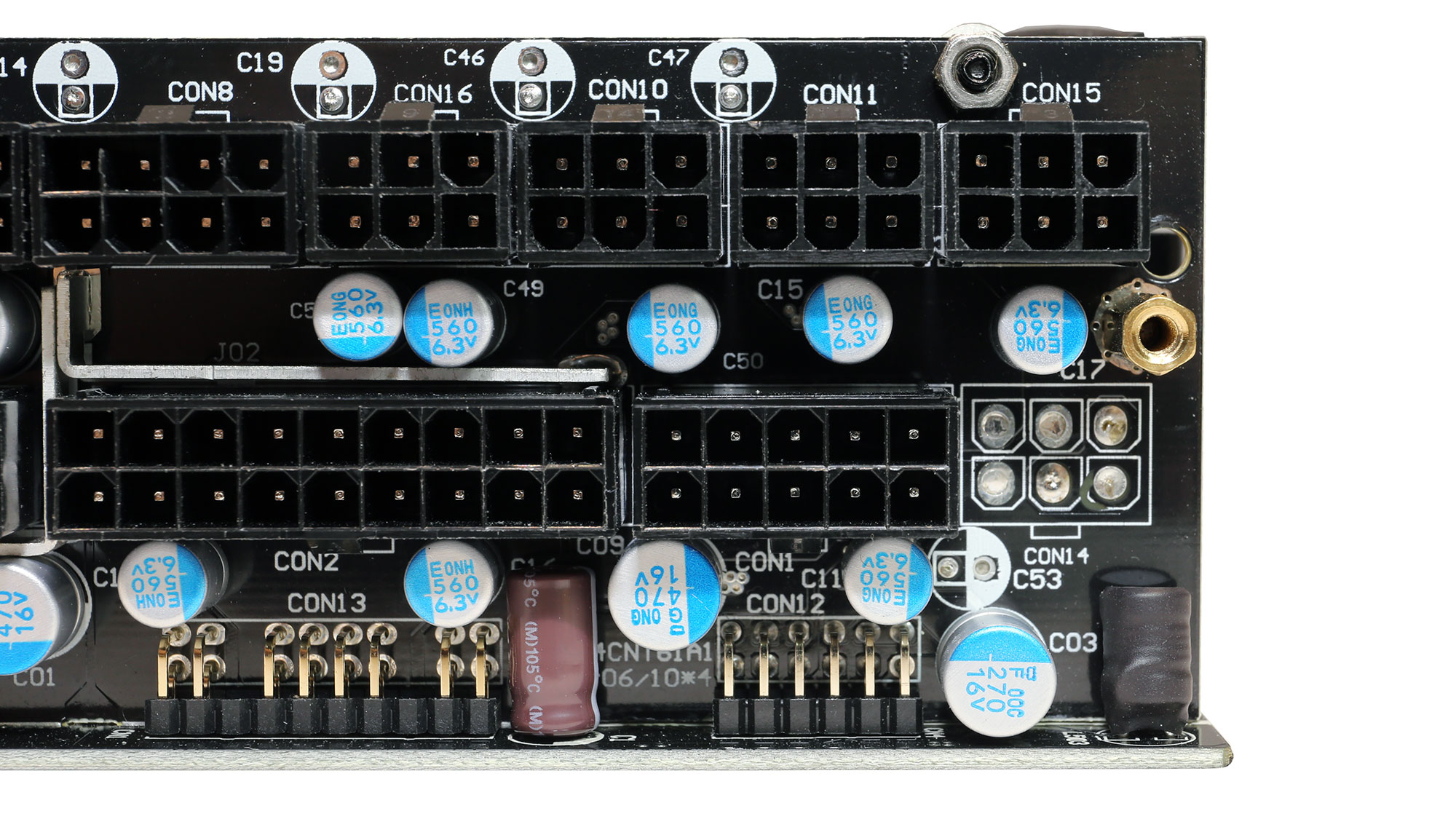
The modular board hosts many polymer caps, for an extra ripple filtering layer.

The main supervisor IC is a Weltrend WT7527RA, supported by a WT51F104 micro-controller.
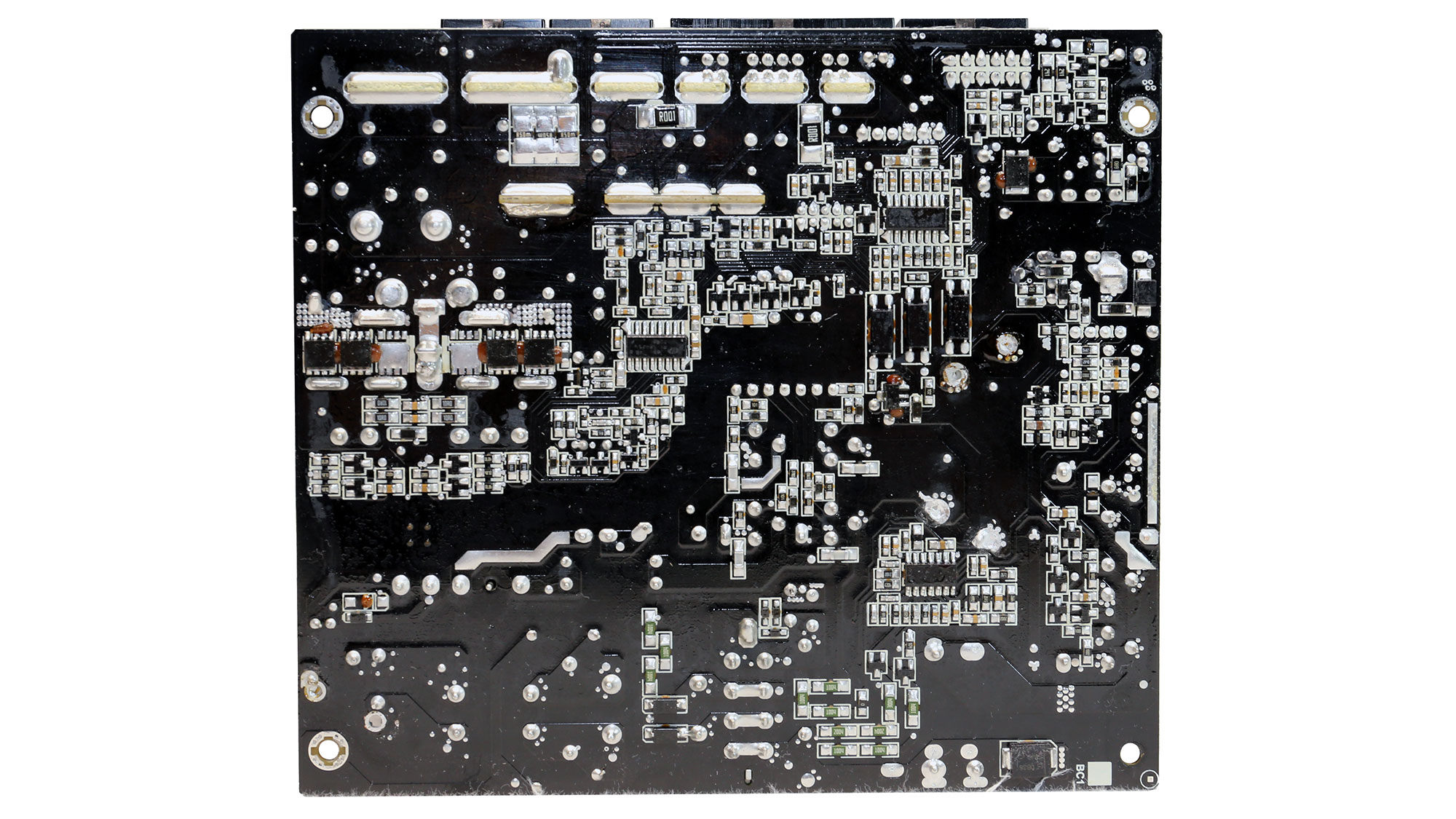
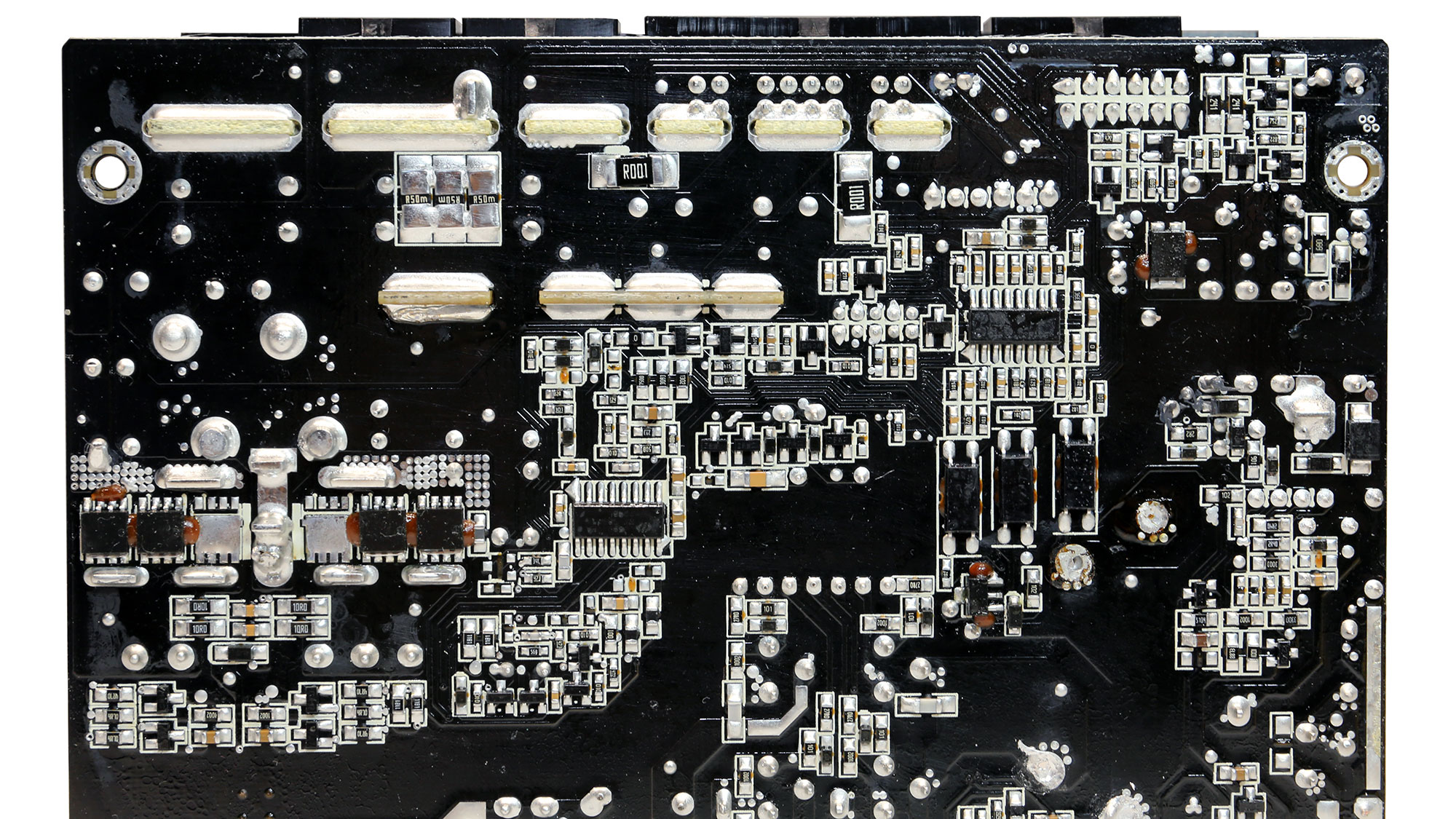
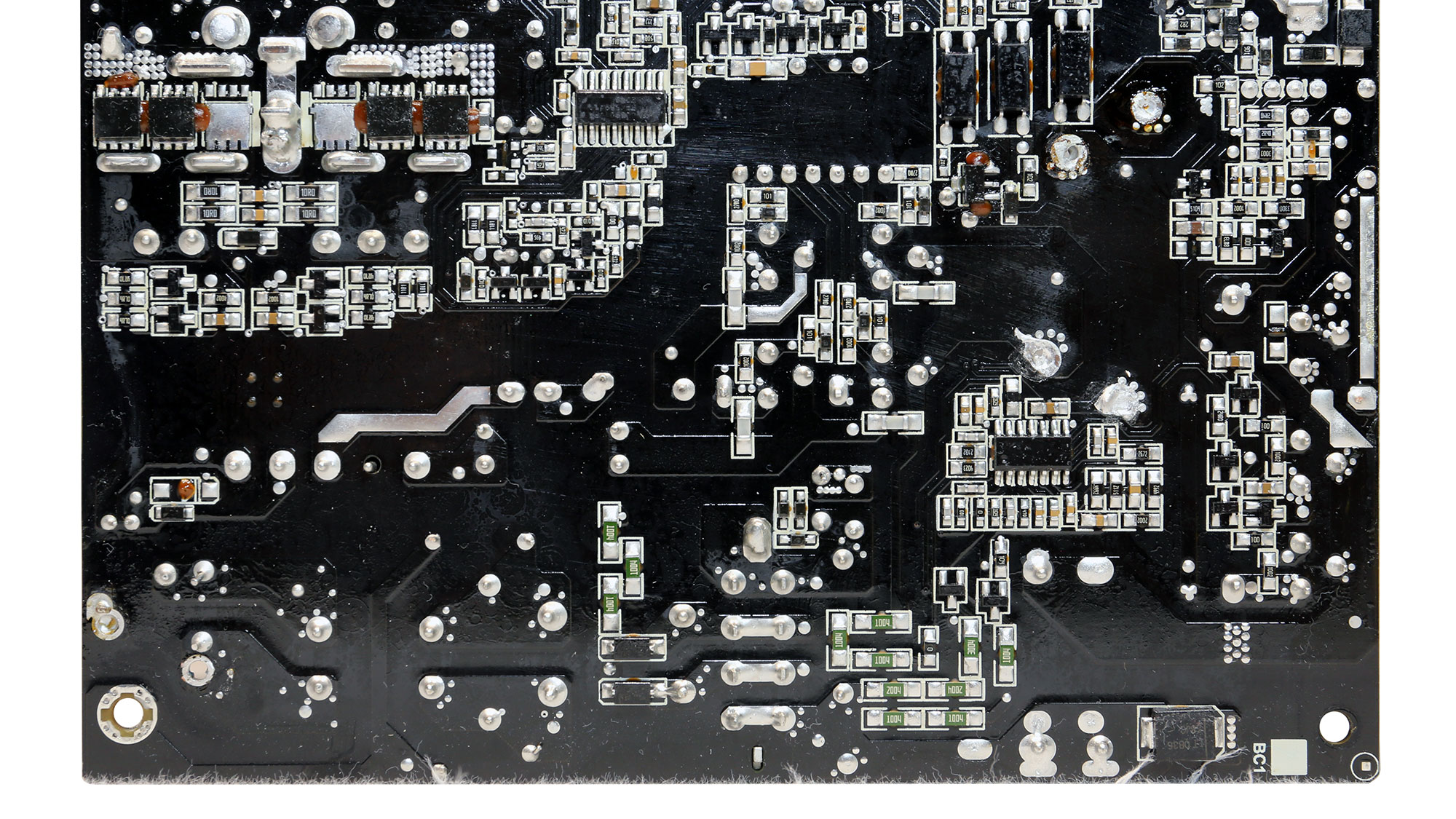
Soldering quality is good.


Hong Hua provides the cooling fan, which uses a fluid dynamic bearing for lower noise output and increased reliability.
MORE: Best Power Supplies
MORE: How We Test Power Supplies
MORE: All Power Supply Content
Current page: Specifications and Part Analysis
Next Page Load Regulation, Hold-Up Time, Inrush and Leakage Current, Efficiency and Noise
Aris Mpitziopoulos is a contributing editor at Tom's Hardware, covering PSUs.
-
Co BIY Thanks - I've been asking for this review.Reply
Hard to beat the Corsair RMx 850 right now when it is shipping direct from them at $115.
I think a discussion at the beginning of each review that hits on the right use case for the power supply would be helpful. Do I need a 850 Watt power supply ? Is there any advantage to going lower or is this supply just as efficient all the way down the ladder so that getting the optimum wattage isn't that important?